Our journey through Italy went beyond just Lucca. We also explored the coastal towns nestled along the Apennine Peninsula. We wandered through narrow streets, admired the colorful houses seemingly climbing the coastal cliffs, inhaled the aroma of fresh pastries, and watched the joyous atmosphere of Italian life.
Cinque Terre: Five Picture-Perfect Villages
Cinque Terre was one of the stops on our journey through sun-kissed Italian towns. It is a national park carefully preserved by UNESCO.

Cinque Terre is free from noisy highways and grandiose architectural masterpieces. Instead, it attracts tourists with its azure sea, picturesque panoramas, steep cliffs, and refreshing air.
Cinque Terre translates to “five lands”, as the park encompasses five villages: Riomaggiore, Manarola, Corniglia, Vernazza, and Monterosso al Mare.
There are two ways to reach this place: by car or by train. We opted for the first way, and even this seemingly simple journey was another adventure for us. We drove past the five villages, gazing at the postcard-like landscapes that unfolded before us.
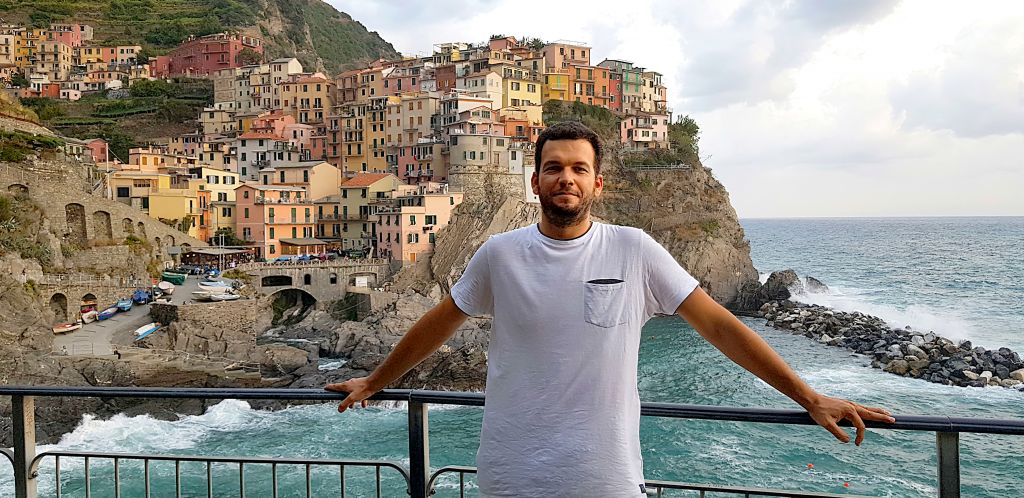
The most popular tourist activity in Cinque Terre is the Azure Trail. This 12-kilometer hiking route winds its way through all villages. It weaves through cliffs, dives into tunnels, skirts numerous vineyards on the slopes, offering breathtaking views of the sea and surrounding mountains.
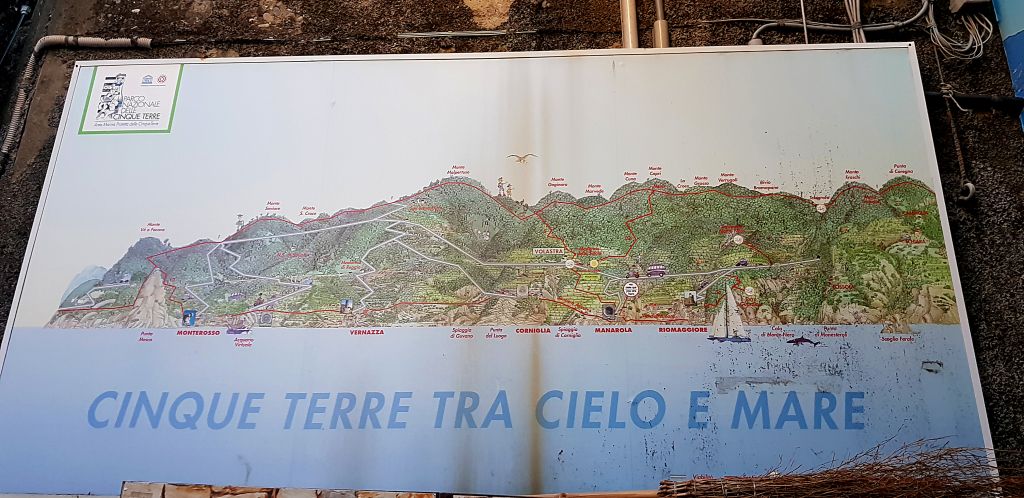
In addition to the main path, numerous smaller trails lead up the hills. They reveal secluded nooks where one can hide from the noisy crowds of tourists and enjoy the peace and quiet.
But the secret of the Azure Trail is not in the walk itself. The secret is in dolce far niente. This is the art of sweet doing nothing, the ability to appreciate the simple joys of life.

Another uniqueness of Cinque Terre is its vineyards. Resembling patchwork quilts, terraces of grapevines cascade down the steep slopes to the very sea. Grapes have been cultivated here since the Middle Ages. Since then, it has remained unchanged — the grapes are still harvested and processed manually. And it is these grapes that are used to produce the renowned wines of Liguria.
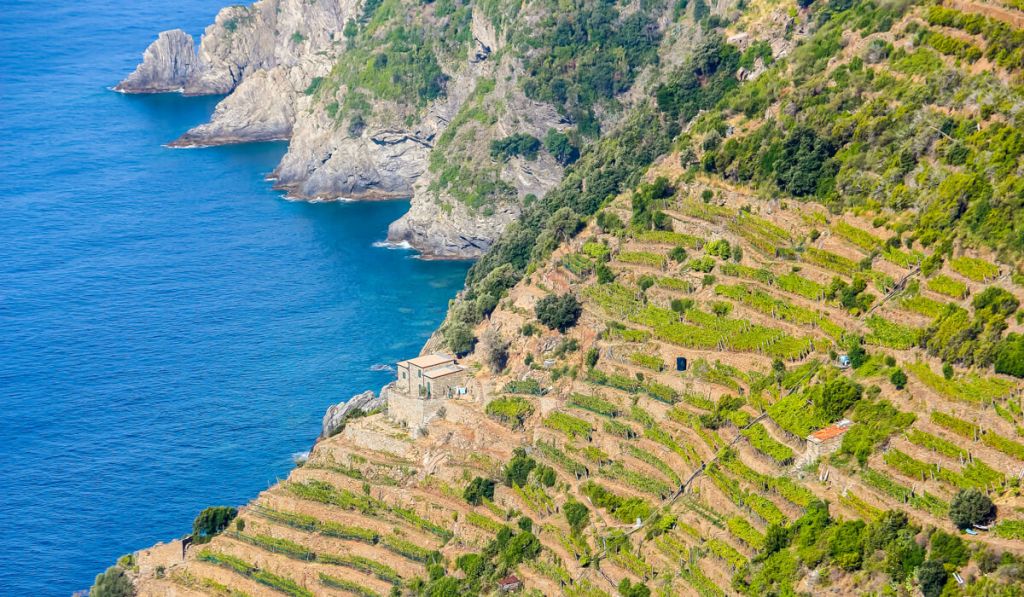
The rugged terrain poses a challenge for transporting the harvest: you need to lift the baskets of the precious berries from the foot of the steep terraces to the wineries. To overcome this, the locals came up with an ingenious method that utilizes a monorail. This is how the system works: workers put the harvested grape clusters in woven baskets, load the baskets onto small motorized carriages, and the carriages then glide along the rail, gently swaying as they ascend.
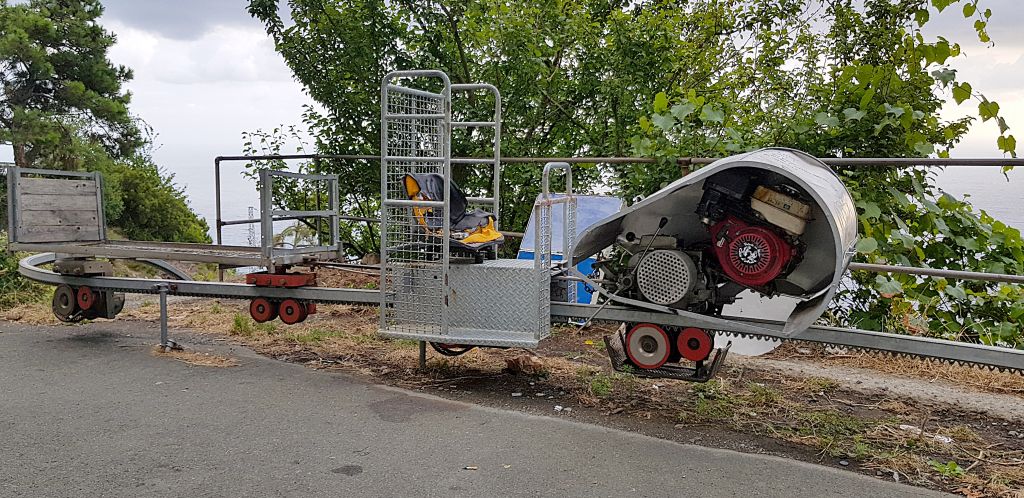
Each village of Cinque Terre has its own port as they all lay along the Ligurian Sea. The most memorable for us was the port of Vernazza with its miniature beach.
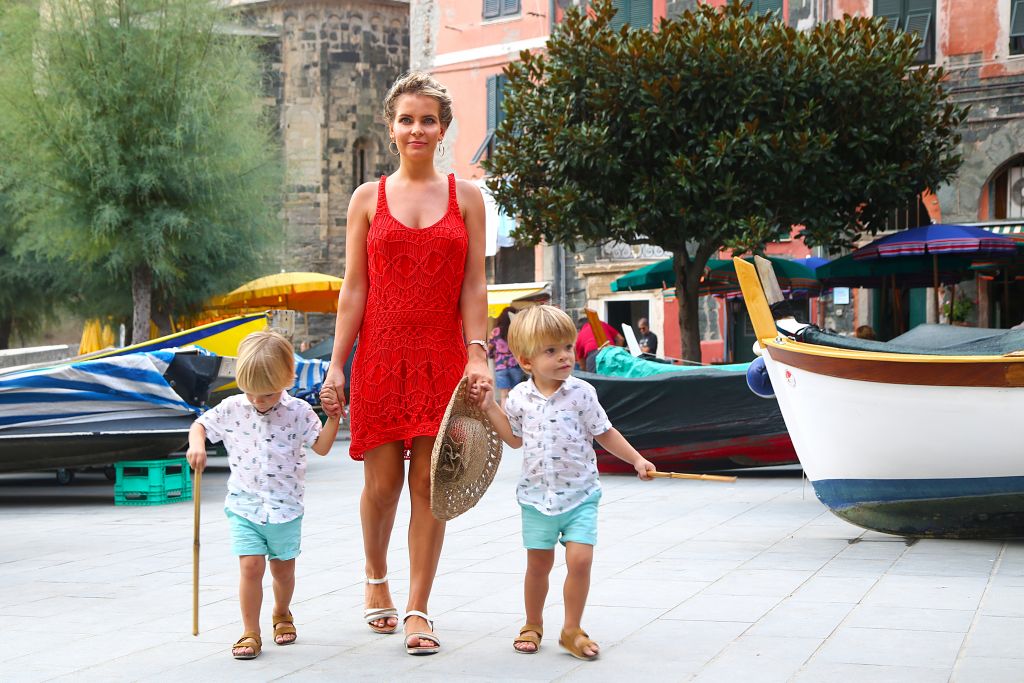
Despite its diminutive size, it is always bustling with people. It attracts both locals and tourists seeking a relaxing respite.
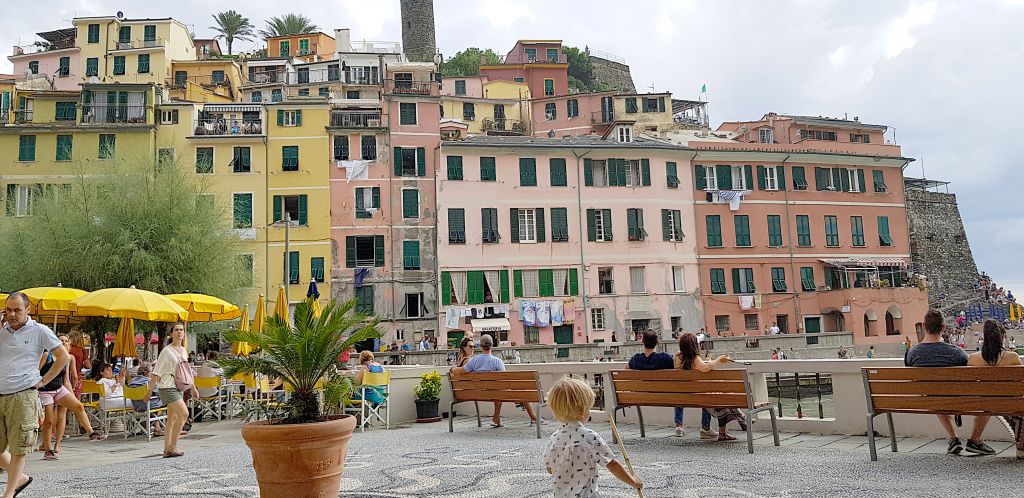
The port is also home to one of the main symbols of Vernazza. It is the Church of Saint Margaret of Antioch, named after the city’s patron.
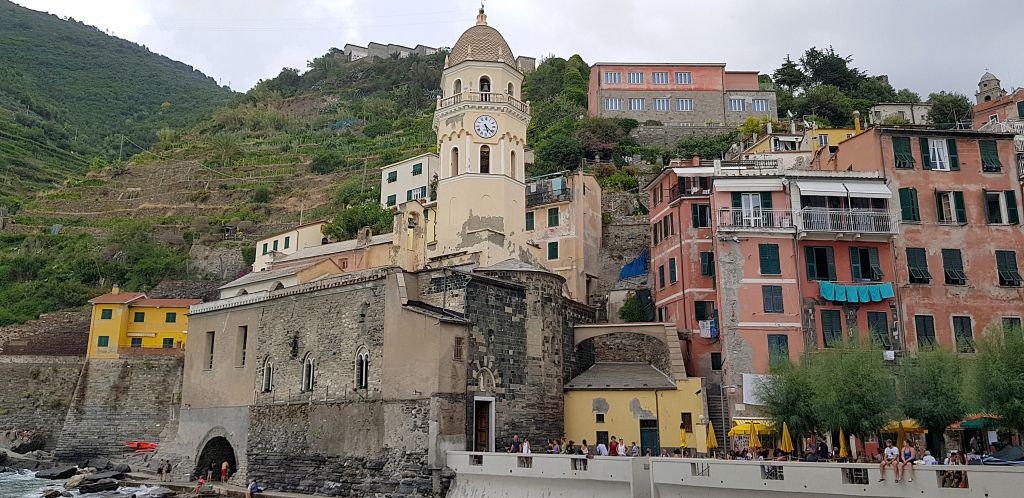
The austere beauty of this Gothic church, with its elegant bell tower, stands in stark contrast to the colorful houses adorning the waterfront.
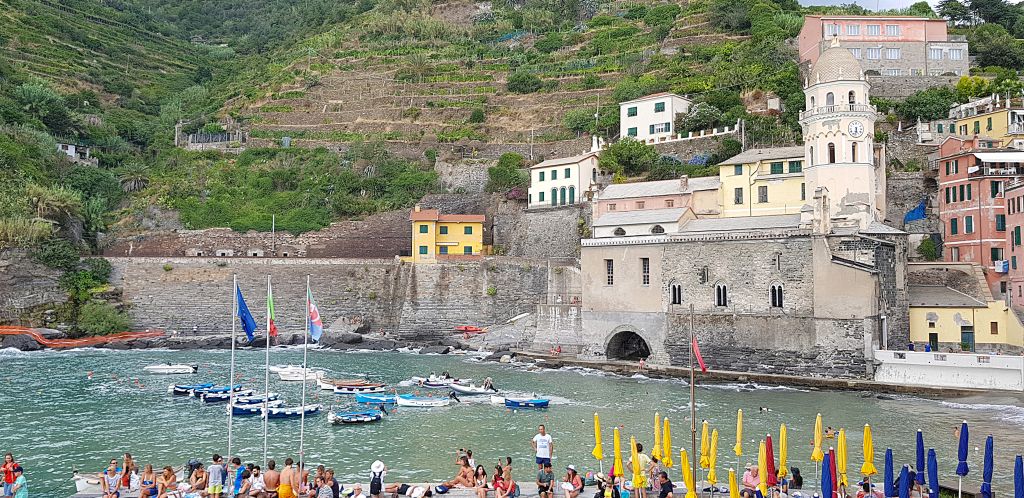
The interior design is minimalist but imbued with the spirit of the medieval times. Three naves separated by columns lead to the main altar. There, the icon of Saint Margaret rests alongside her medieval sculpture.
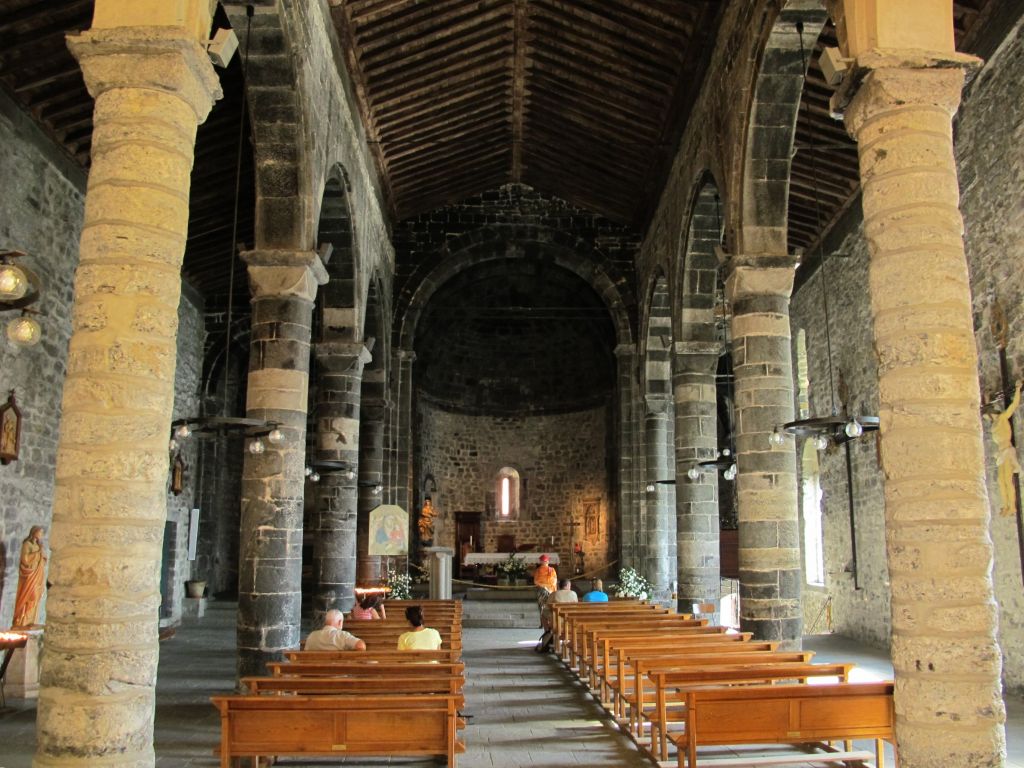
The port of Vernazza proved to be the perfect place to relax with our entire family. Our boys relished every minute there. They listened to the sound of waves crashing against the rocks and inhaled the salty breeze.

It seems that Cinque Terre offers the ideal conditions for leisure. However, we noticed one major drawback: every day, thousands of tourists come to the tiny villages, intended for several hundreds of inhabitants.
Once, these picturesque settlements were a quiet refuge for artists, poets, and writers. There, they drew inspiration for their novels and poems. Only a few creative minds would come to Cinque Terre at that time, and their visits could last for months. But today everything has changed. Tourists come here in hundreds, striving to see all the beauties of these places in one day. The narrow streets are filled with noisy crowds, disturbing the former stillness. Modest fishermen’s dwellings are replaced by souvenir shops and restaurants. The summer is the busiest time for tourism here. These lands are no longer a haven for poets seeking inspiration.
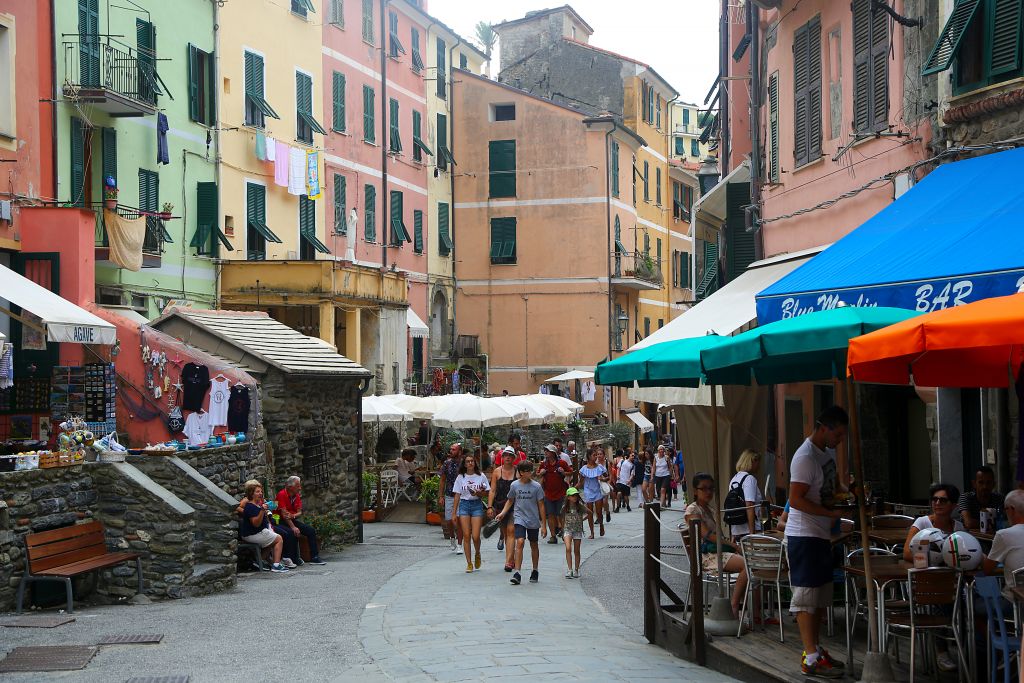
Despite these drawbacks, Cinque Terre will always hold a special place in our hearts as one of the most picturesque and authentic locations we have ever visited. Even with its incredible popularity, the atmosphere of rural tranquility still prevails here, which is so lacking in large cities.
Santa Margherita Ligure: Ancient Castles and Green Gardens
We also made a brief stop in the town of Santa Margherita Ligure. The town is nestled amidst green hills on three sides, while the eastern side opens up to the sea.
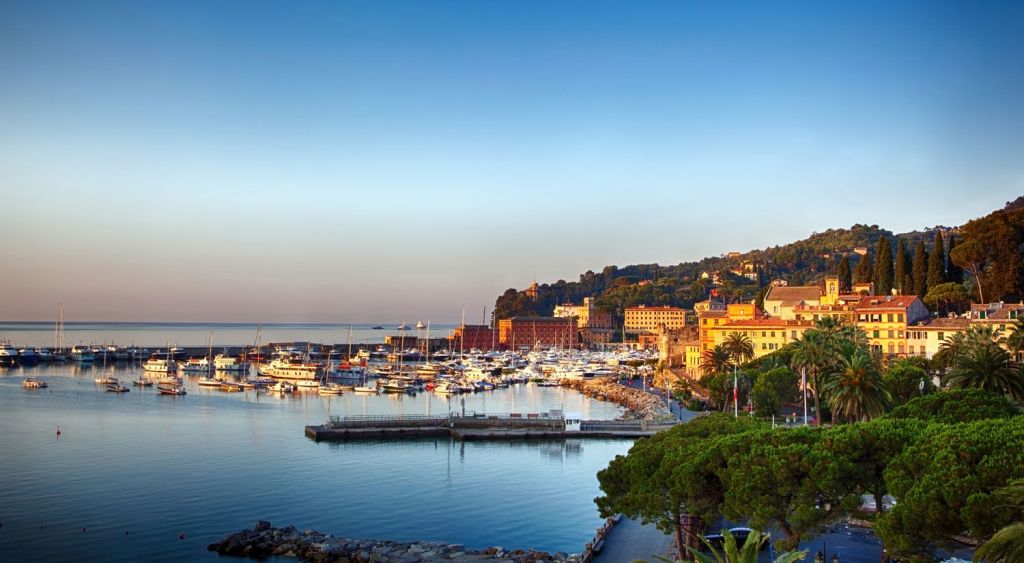
Strolling through the historic streets of Santa Margherita Ligure was like traveling through time. Here, we discovered medieval castles, ancient churches, and charming squares.
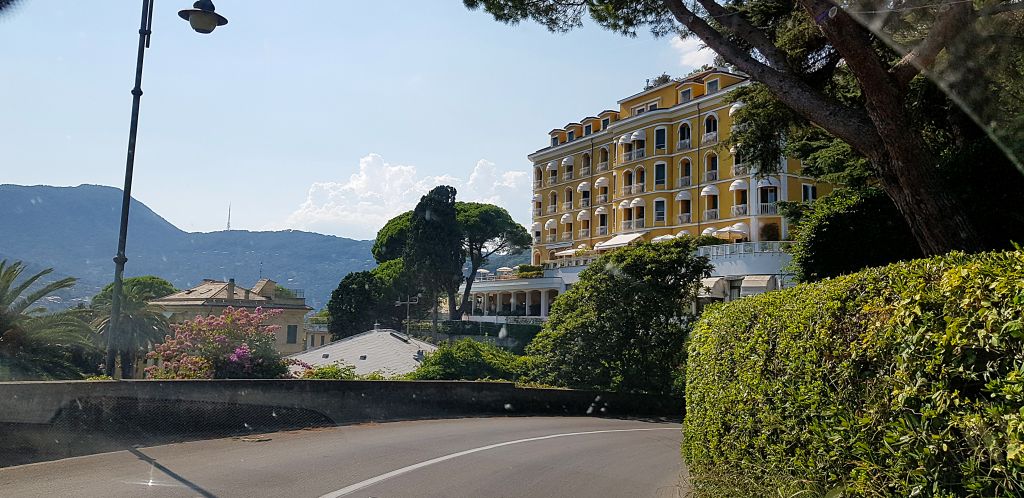
The heart of the city is dominated by the eponymous castle, situated right on the shore of the Ligurian Sea. Built in the 16th century, this historical monument successfully preserved its imposing architectural features to this day.
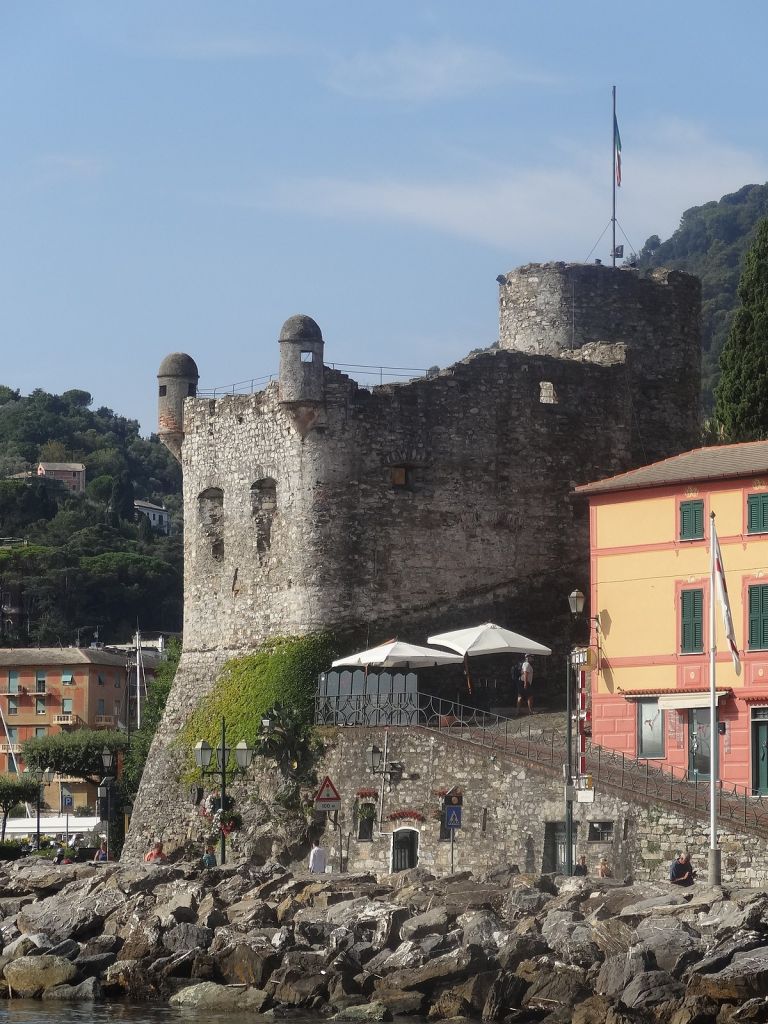
As with many historical sites, the castle of Santa Margherita Ligure is shrouded in legends and stories, shared by the locals. One legend tells of a hidden treasure within the castle walls. It was left by pirates who plundered ships and stashed their loot in the castle’s cashes. Many treasure hunters tried to find this loot, but it still remains undiscovered.
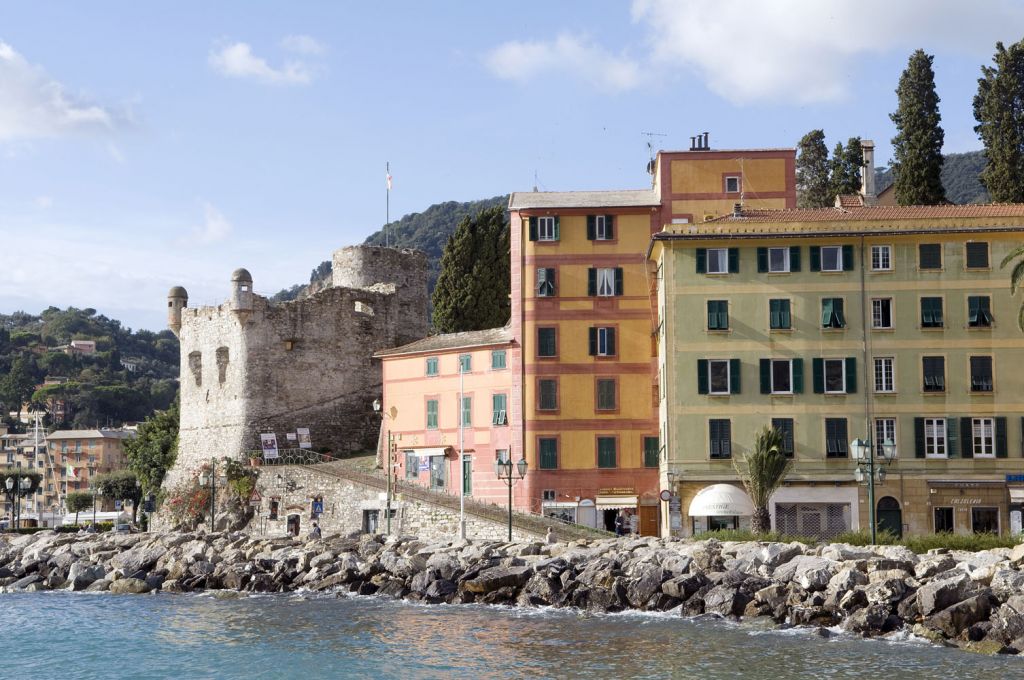
The Villa Durazzo is another famous building located in the downtown. Built in the 17th century, it changed several owners over the years. This is why the villa’s appearance today is a mix of different styles, including Genoese Baroque, Neoclassicism, and Rococo. Its face is adorned with frescoes and bas-reliefs that captivated us with their grandeur.
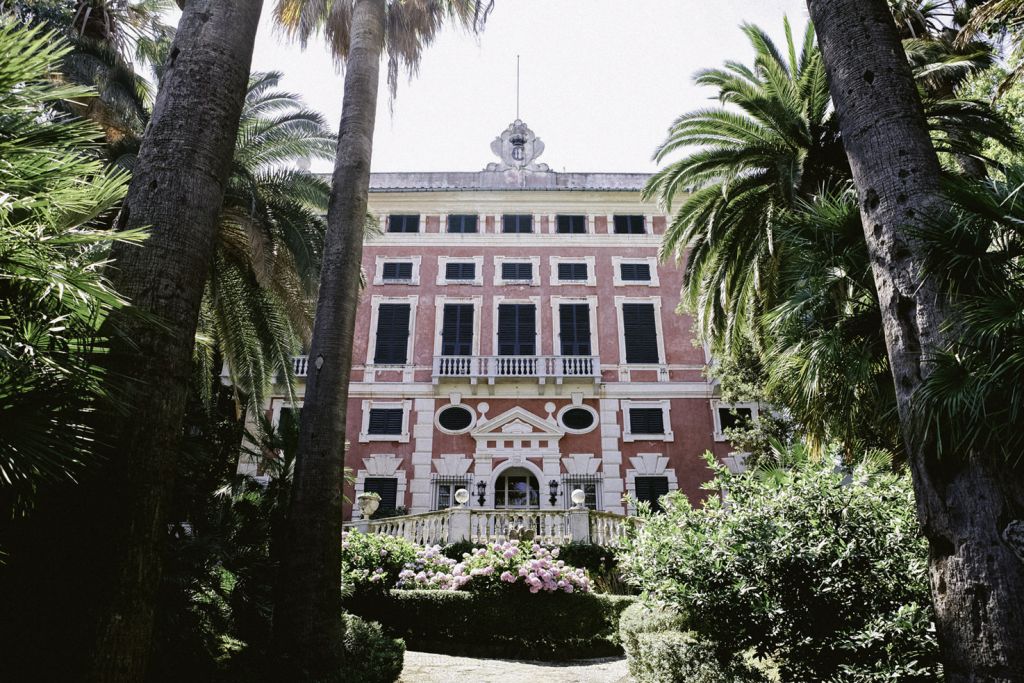
The vast garden, sprawling across the villa’s extensive grounds is its pride and joy. Designed in the English landscape style, it aims to mimic natural landscapes to the fullest extent.
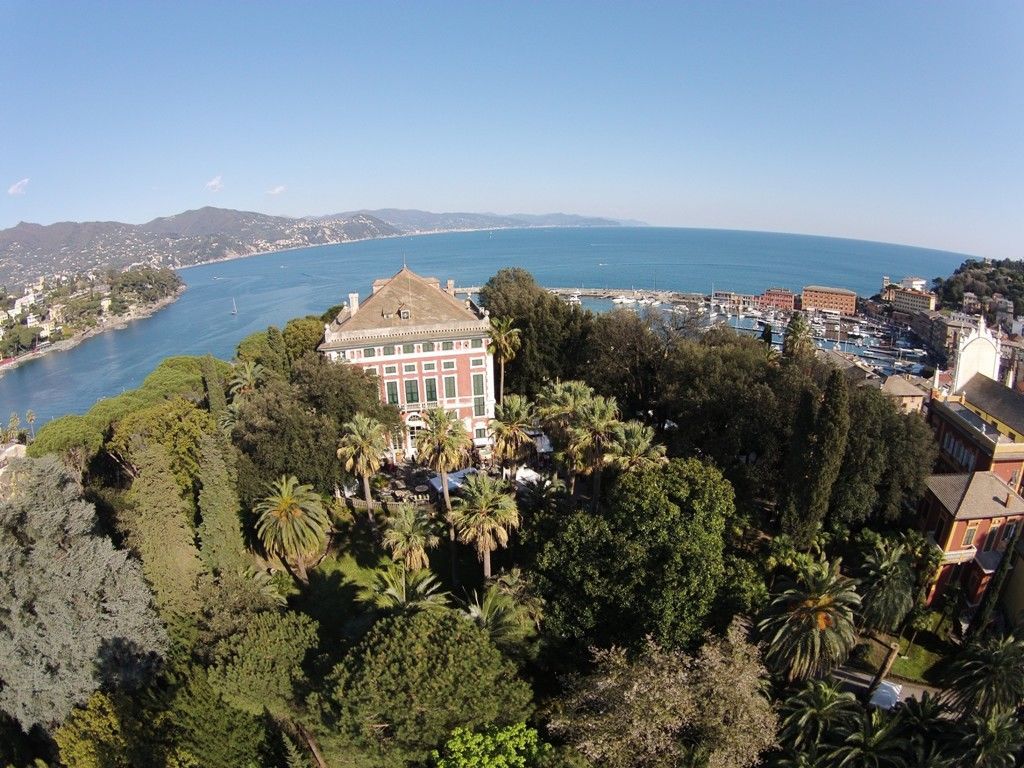
To our surprise, Santa Margherita Ligure is not overrun by tourists that much. While walking along the streets, we could enjoy the architecture and the special atmosphere of the city instead of fighting our way through crowds. However, the city is not devoid of visitors: the number of tourists increases significantly in the peak season. You can hear a variety of languages spoken on the waterfront, in cafes and restaurants.
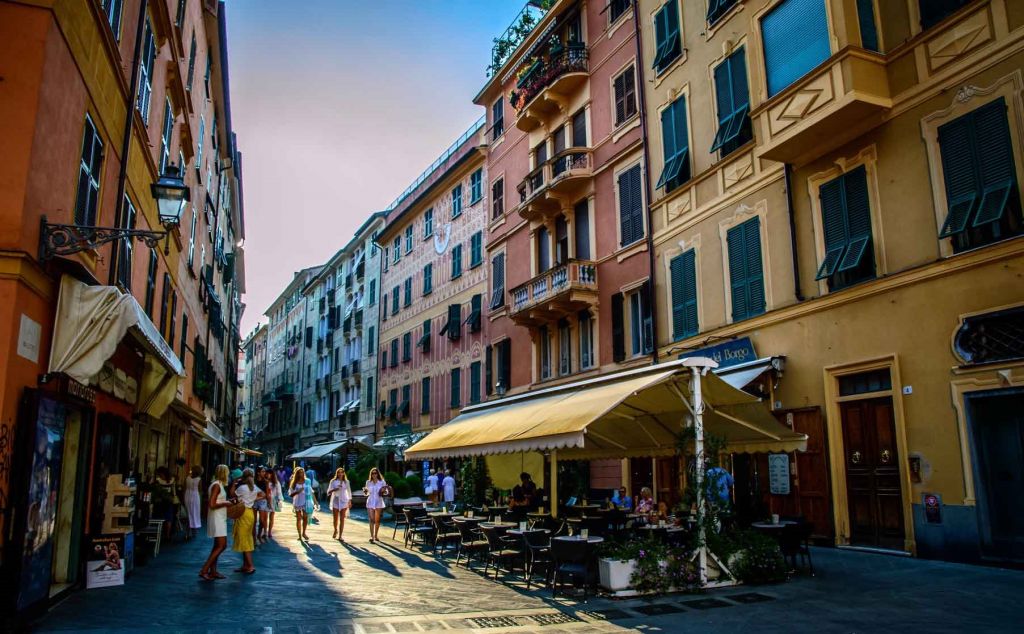
English is less common outside tourist areas in this city. Once, we visited a restaurant where none of the staff spoke any language other than their native one. This was a slight challenge for us as we do not speak Italian. On the other hand, this feature added to the authenticity of the city and allowed us to embrace its uniqueness.
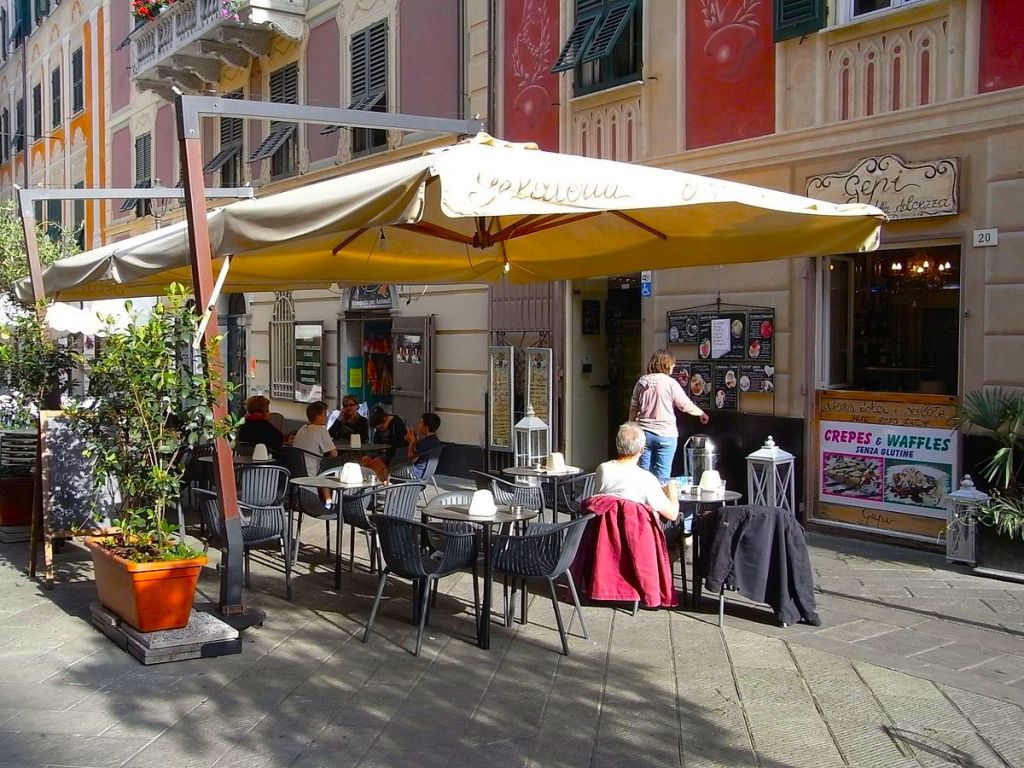
Another point of interest is set meals in many restaurants. These meals change daily and are based on unique cooking styles, as well as the use of fresh local ingredients. On the one hand, we found this approach quite appealing. Set meals are more affordable and were a great way to try new dishes that we might not have otherwise ordered. On the other hand, the set meals are extremely limited in dishes: they offer only three choices of main course, three choices of appetizer, and three choices of dessert.
Portofino: A Muse for Writers and Poets of the Past
Located four kilometers from Santa Margherita Ligure, the tiny town of Portofino charmed us at the very first sight. Its bright yachts swayed on the waves and loud birds circled over the water’s surface.
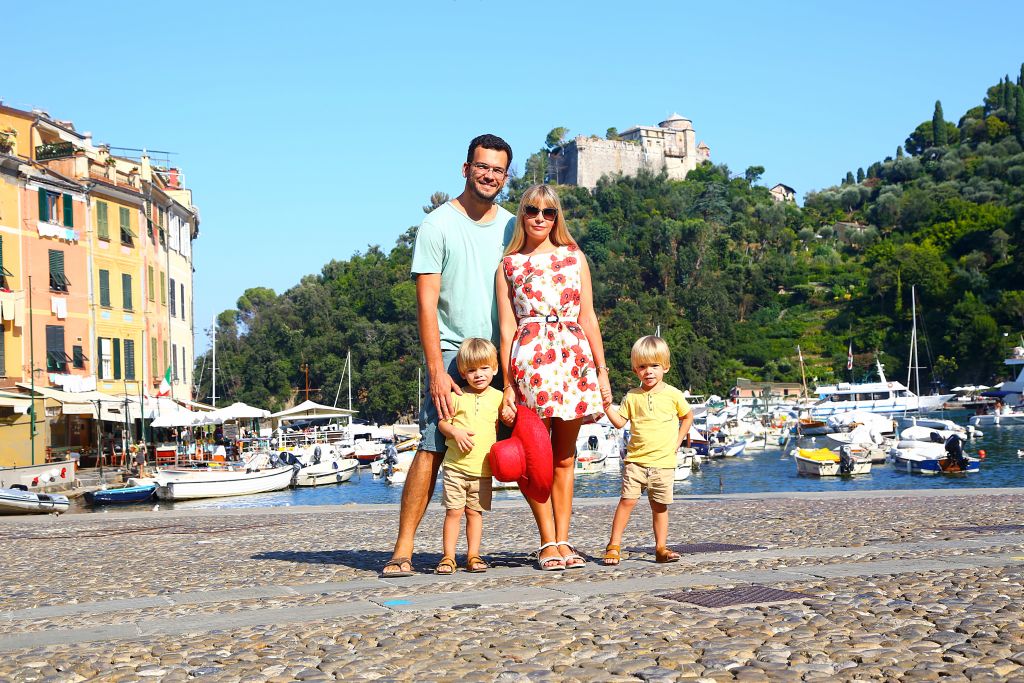
The harbor of Portofino is more than just a place where boats dock. It is the heart of the town. The square at the harbor hosts events and houses most of the stores and restaurants.
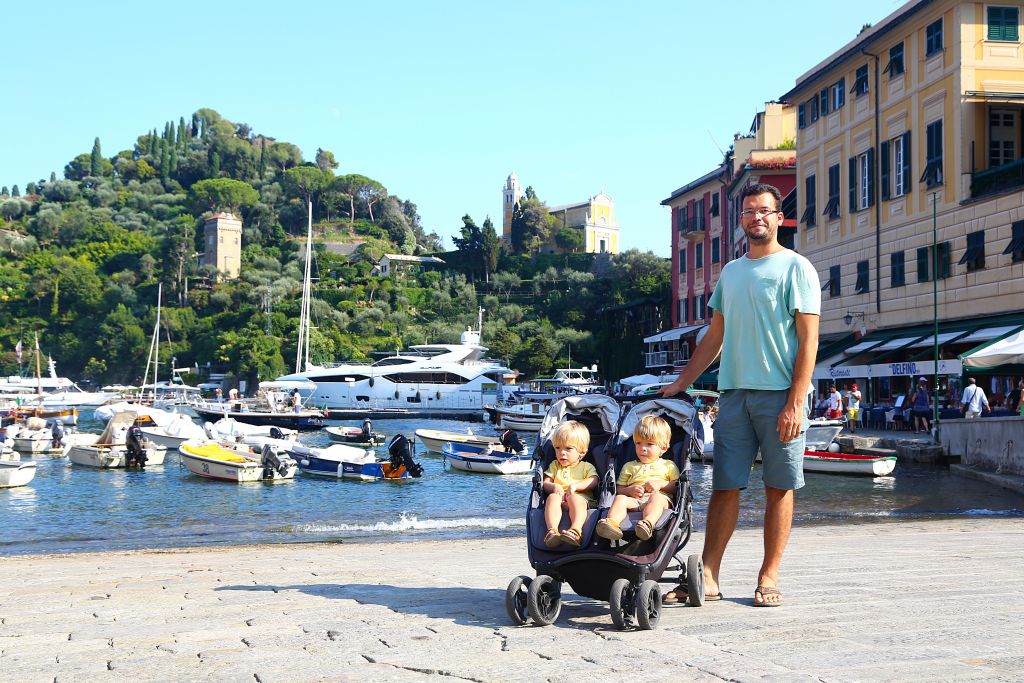
Throughout our visit, we enjoyed extensive walks both within Portofino itself and its surrounding areas. One of our walks took us to the south of the city to a small peninsula. There, we found castles, viewpoints, towers, and parks.
Turning off the main road, we found ourselves in front of the 12th-century Church of San Giorgio. This ancient building is located on a small hill that offers stunning views of both Portofino and the surrounding forests and the sea.
The church boasts a blend of Romanesque and Gothic architecture. The face features carved arches and columns, while the interior is graced with 15th-century frescoes.
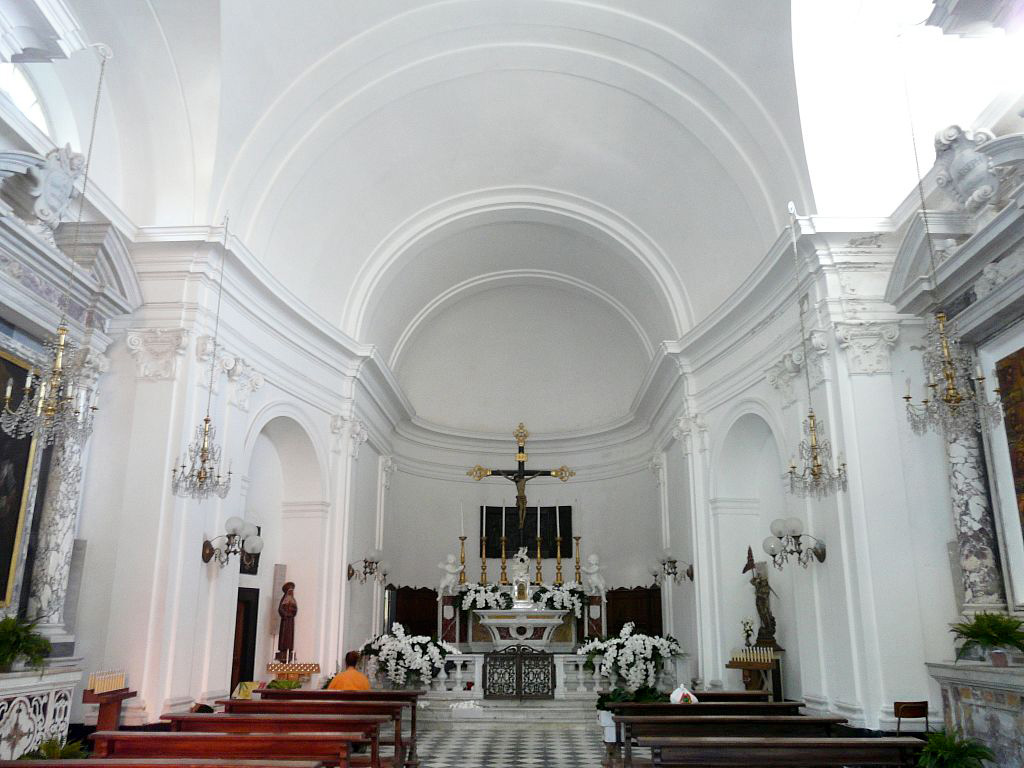
A highlight of the church is its carved door. It showcases scenes from the life of Saint George.
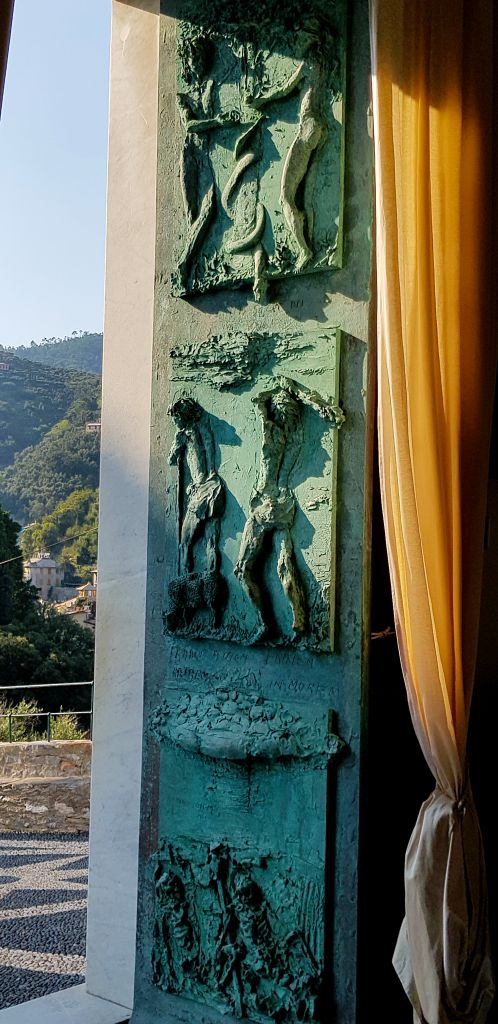
The church has a small cemetery in the back, serving as both a burial ground and a historical landmark. It is the final resting place for notable figures such as writers William Somerset Maugham and Cecil Scott Forester and playwright Samuel Beckett.
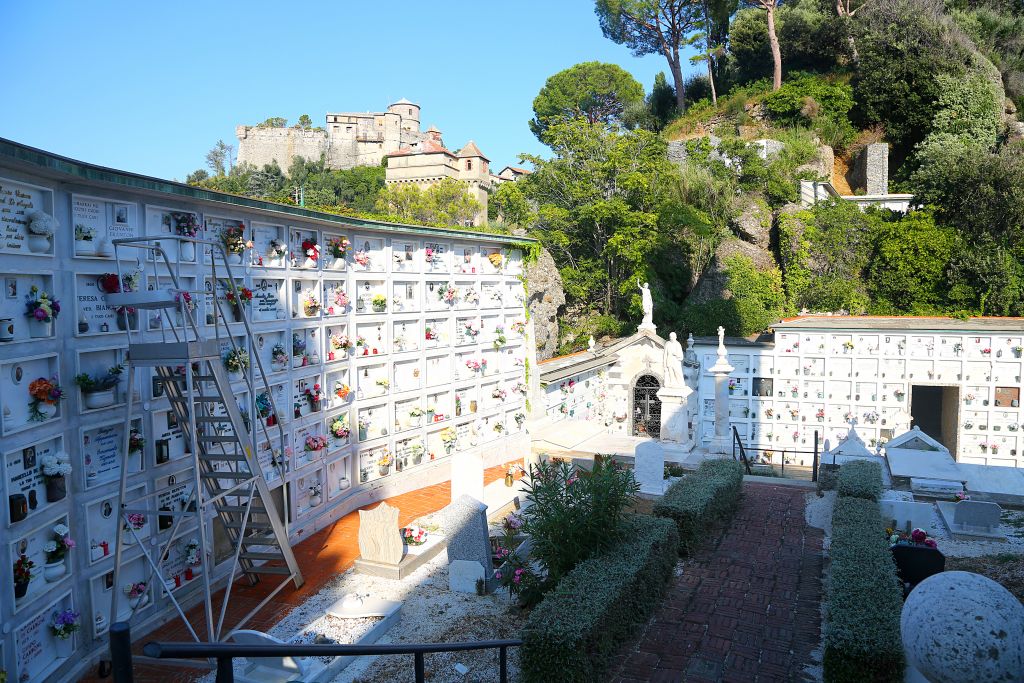
Alongside these famous people, the cemetery also holds the graves of ordinary people. We saw the graves of sailors, fishermen, artisans, and other residents of Portofino.
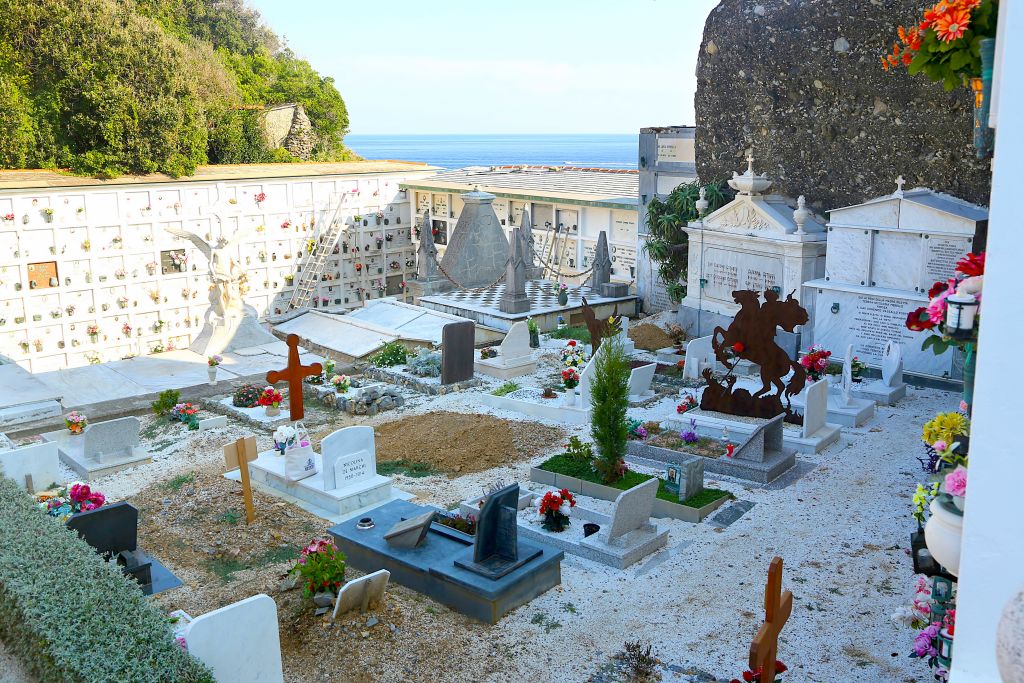
Another highlight of Portofino is Castello Brown, which towers over the peninsula on a hill. The castle’s history dates back to the 12th century when there was a Genoese fort at this location. The castle became the residence of the English consul in the 19th century, earning its name — Brown.
Its architecture is a blend of styles, ranging from medieval to romantic. The sturdy walls, towers, and loopholes reminded us of its past of defending, while elegant windows, terraces, and arches added a touch of charm.
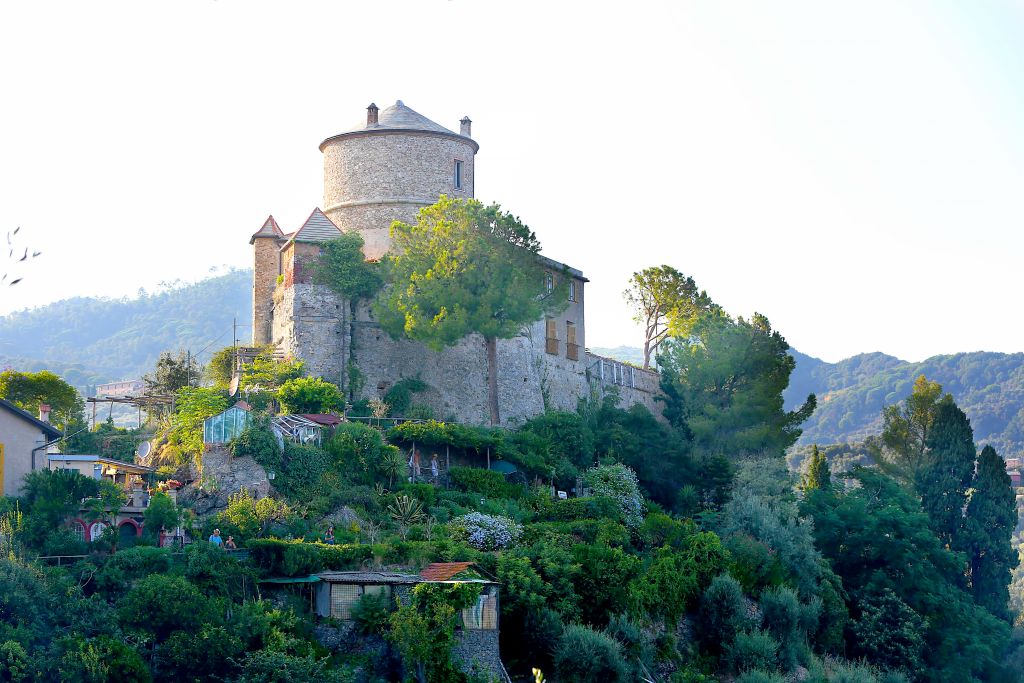
Portofino, while popular, is little more than a village in Cinque Terre. Its population is only 400 people, and almost all of them are involved in the tourism industry in one way or another. Since the town is tiny and the demand to visit it is very high, there is barely room to move during the peak season. The streets become bustling anthills, and finding a table at a restaurant on the main square can be a challenge.
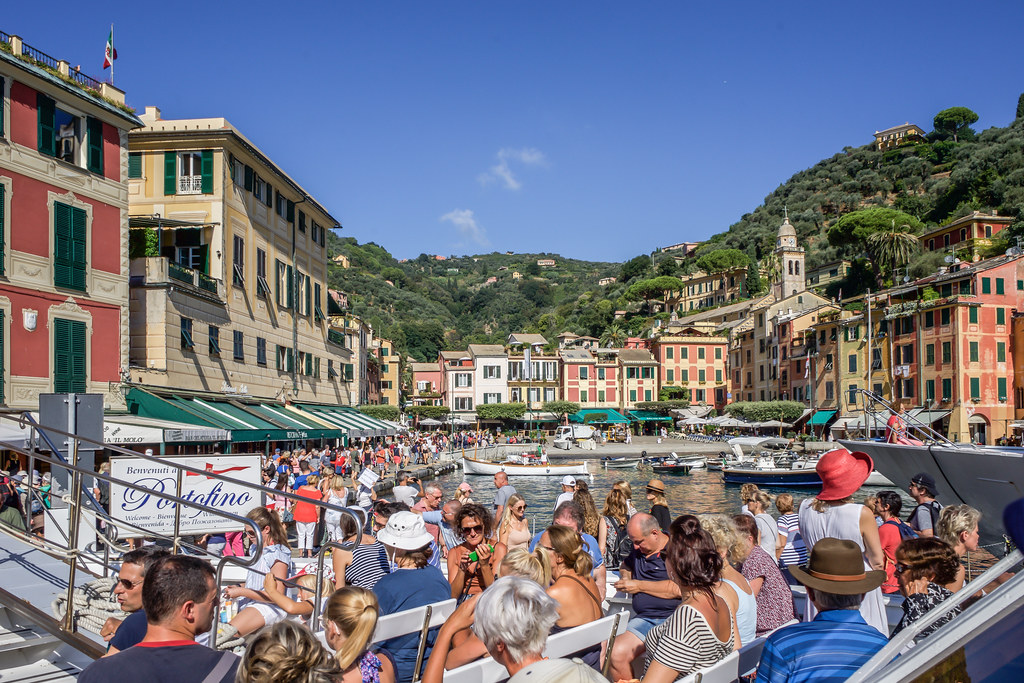
Parking was another challenge we faced. The spaces are extremely limited and the demand is very high. Since we arrived in the town by car, finding a spot was a real ordeal for us. We spent a significant amount of time searching for a parking space. Once we found one, we were very surprised to see its cost — €5.50 per hour!
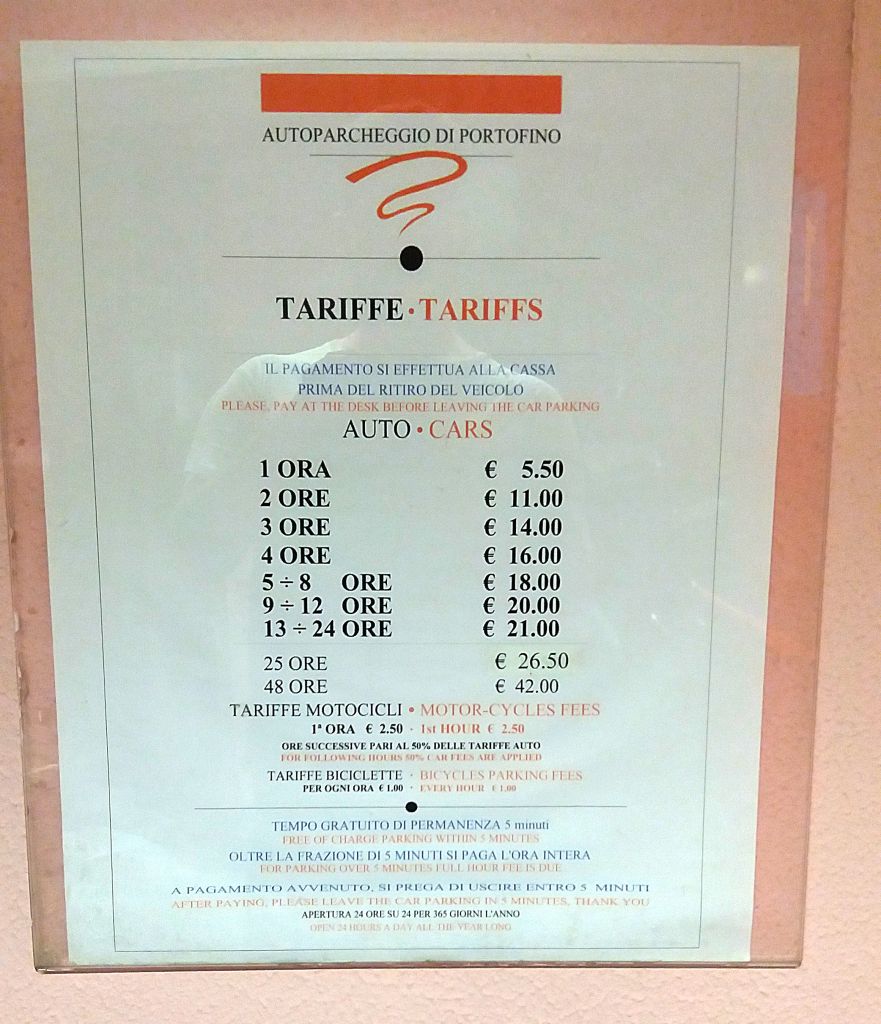
Portofino will always hold a special place in our hearts as a tiny place, charming with its scorching Italian sun, the beauty of the sea, and the bustling harbor filled with luxurious yachts at the pier.
La Spezia: Home to Italy’s Largest Port
La Spezia stands in stark contrast to the neighboring settlements. Surrounded by sleepy and tranquil villages, La Spezia is a bustling hub of activity.
The city’s beating heart is its port, one of the largest in Italy. It is a hive of activity: workers load and unload ships, repair military and passenger ships, and locals commute on boats and ferries. The port is also the final destination for many cruise ships. Before continuing their journey, passengers disembark to get a closer look at the vibrant city of La Spezia.
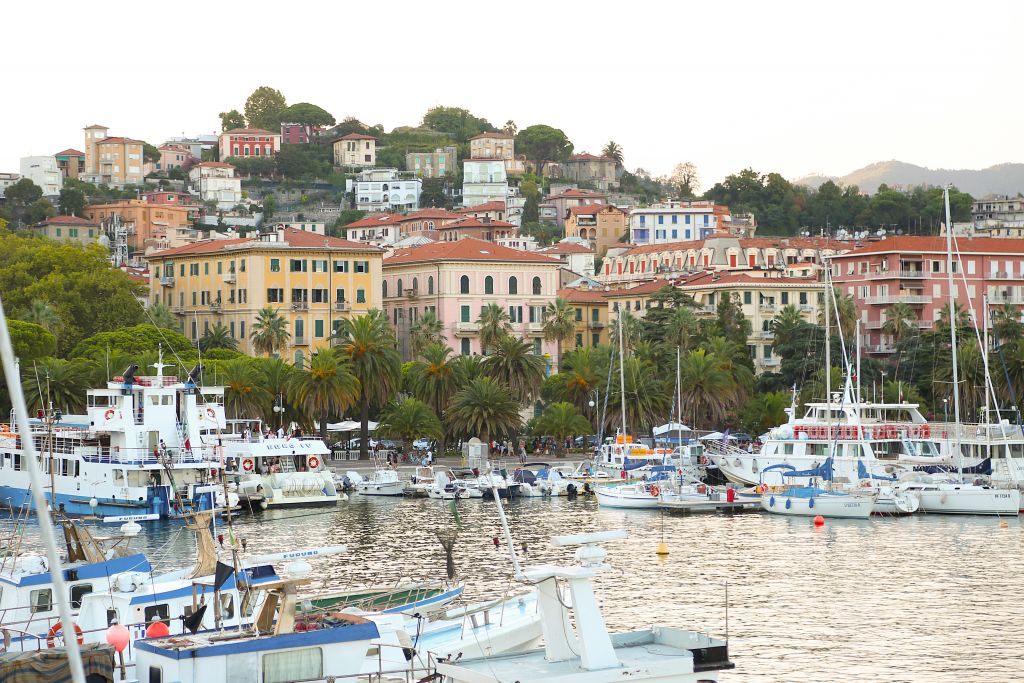
What we especially enjoyed in this city was walking along the long promenade that stretches for 7 kilometers along the city.
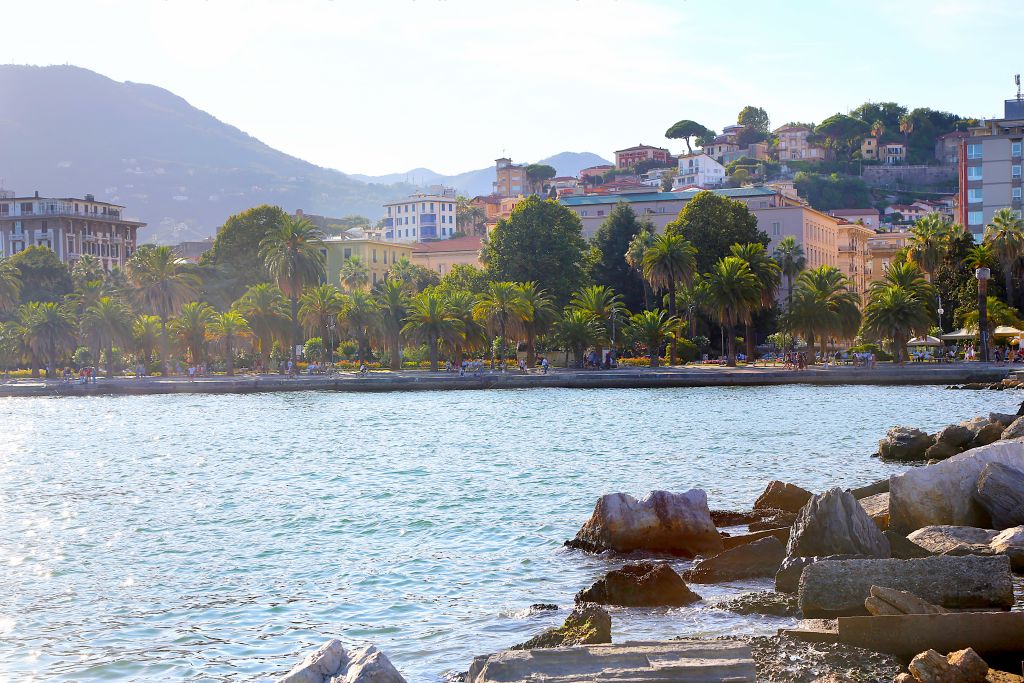
The walkway reflects modern trends: sidewalks are stylishly paved, and tall palm trees lining up along them provide shade from the sun. It is a lively spot, with tourists capturing the beauty of the surroundings, locals taking leisurely walks with their dogs, and artists painting the scenery.
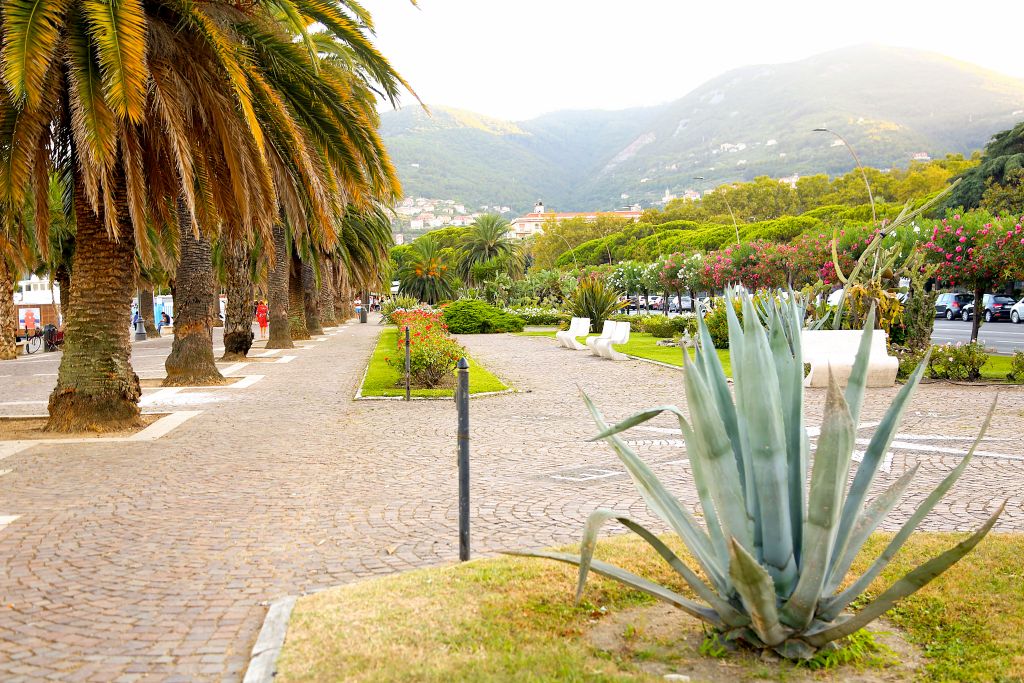
The highlight of the promenade is medieval bronze cannons. Having been cast in the 15th and 16th centuries, these cannons repeatedly defended La Spezia from enemy ships. Each cannon stands 5 meters long and weighs almost 3 to 4 tons. Remarkably, they have been preserved in excellent condition despite the passage of 5 centuries. We could even notice traces of time, such as patina and scratches, which further enhance their authenticity.
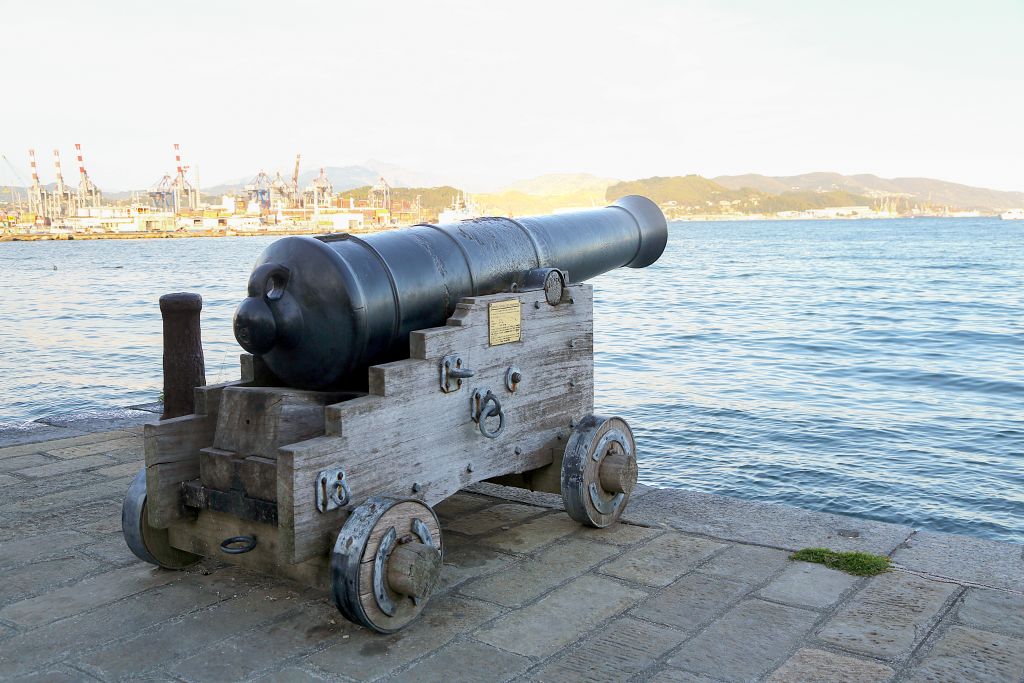
The massive structures immediately captivated Misha and Robert. Our little ones eagerly climbed on them, resembling young pirates. They laughed merrily and reveled in the breathtaking view that unfolded from atop these structures.
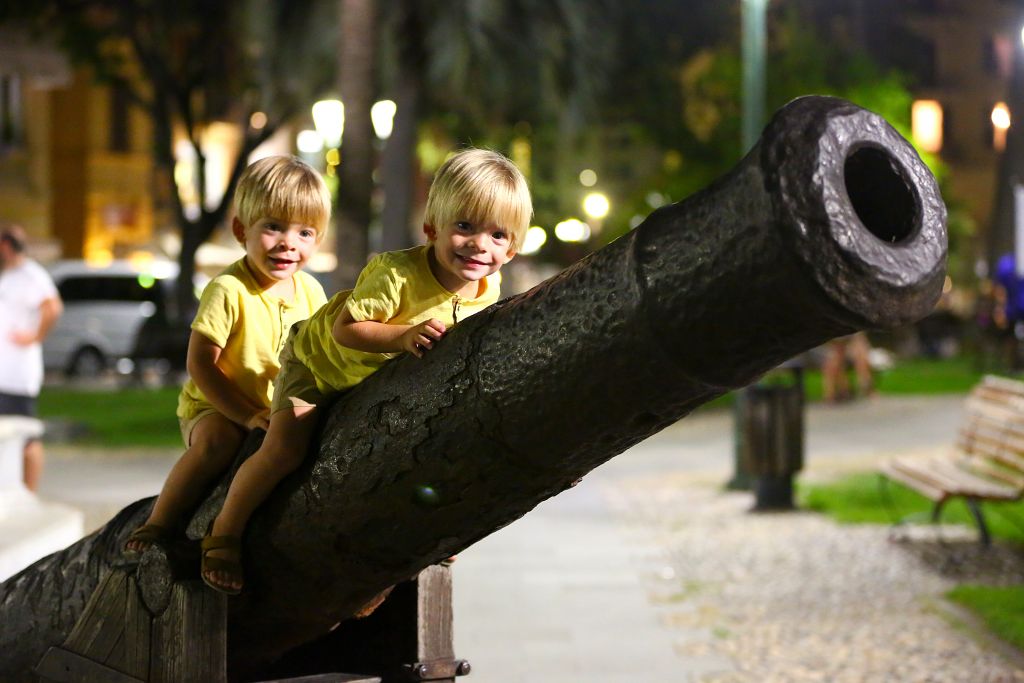
Another tourist attraction in La Spezia is the Castle of San Giorgio. Its central element is a square 40-meter-high donjon. Its walls are made of stone and decorated with battlements, while towers, loopholes, and observation platforms complete the fortress’s architectural ensemble.
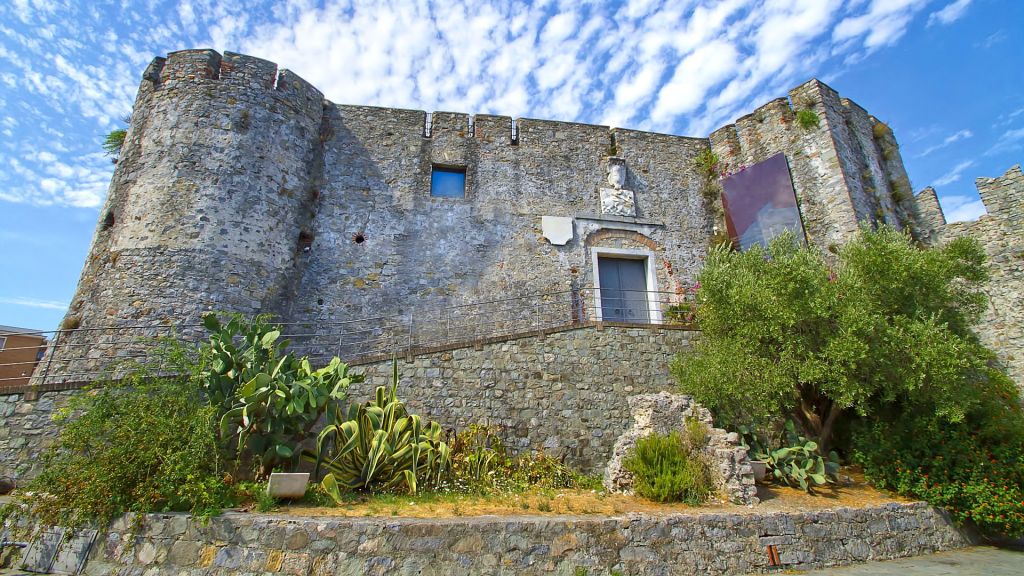
Throughout its centuries-long history, San Giorgio stood witness to countless battles, sieges, and changes of ownership. It served as home to the Genoese doges and even prisoners.
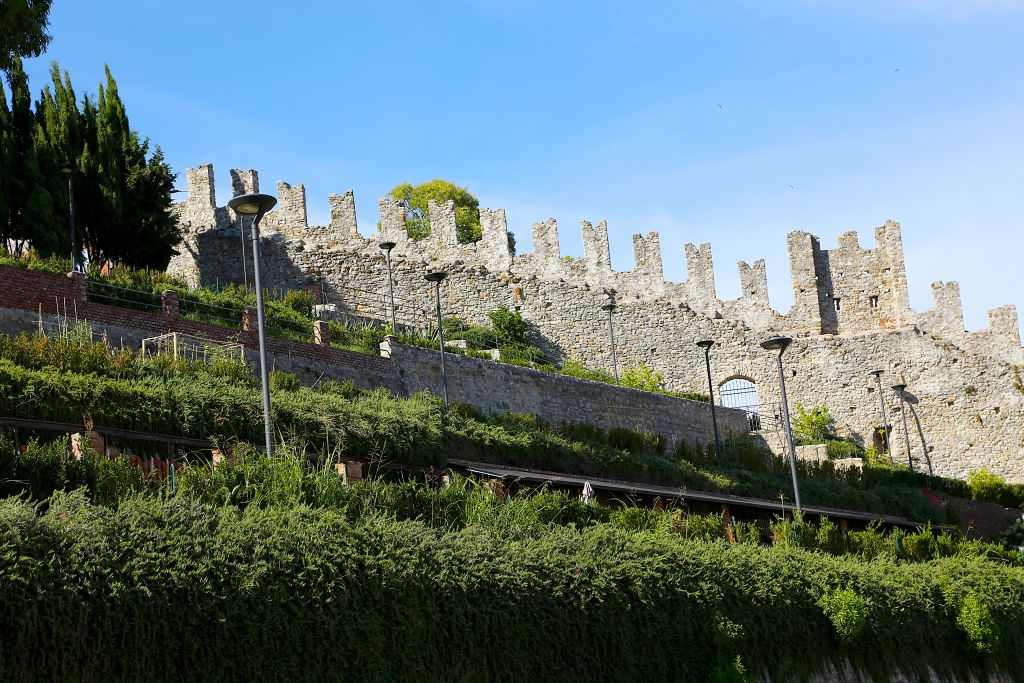
Today, the castle is a museum open to the public. It welcomes visitors to explore its exhibits, telling about the history of the city, the castle, and its inhabitants.
Viareggio: A Patchwork of Architectural Styles
Our journey through Italian cities undoubtedly encompassed one of the most renowned resort towns of Viareggio. Founded in the Roman Empire, the city gained its status as a resort in the 19th century. At that time, the aristocracy from across Europe came here to relax, so the city quickly transformed into a fashionable resort.
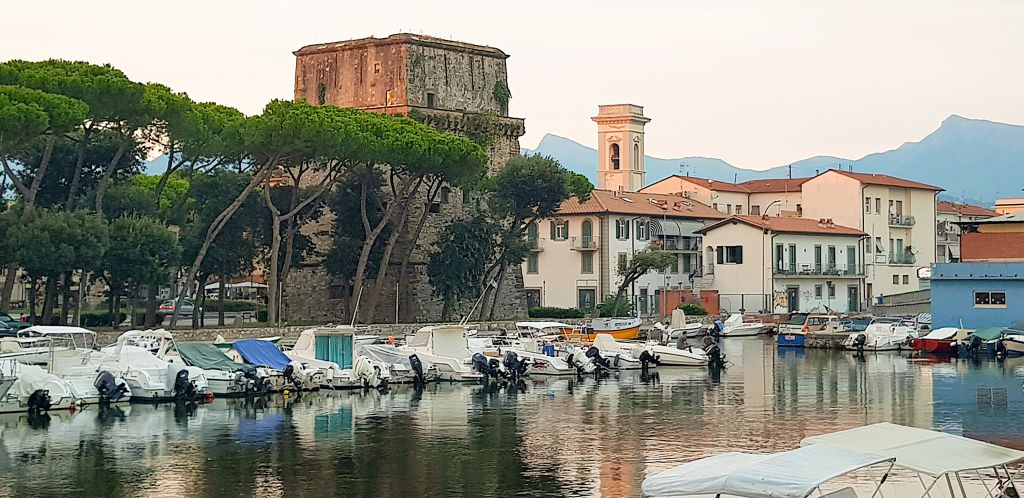
The 10-kilometer sandy beach in Viareggio is one of the most popular in Italy, and we frequently visited it.

The beach is fringed by a famous promenade, a long, shady avenue adorned with flower beds and sculptures. Here, locals and tourists walk, have lunch in restaurants, ride bicycles or roller skates. The atmosphere on the promenade is one of tranquility and peace, so allowed us to comfortably admire the sea air and the picturesque views of the city.
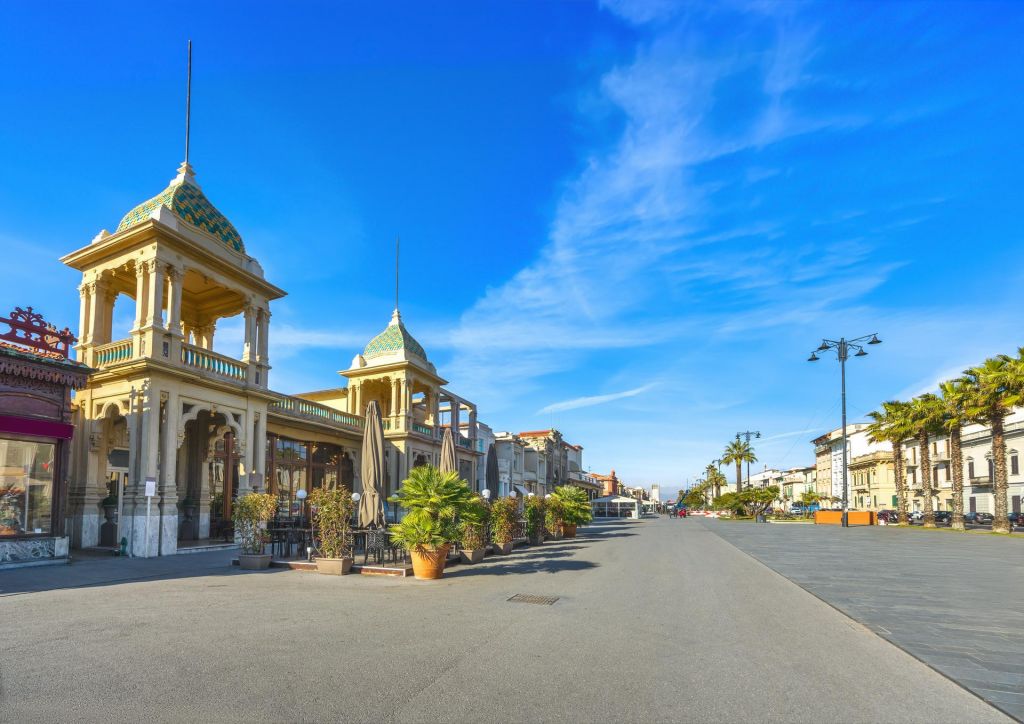
The streets of Viareggio are lined with beautiful and colorful buildings, with architectural styles ranging from classic Italian to Art Nouveau and Art Deco. But the downtown is the most captivating. The majority of the buildings here were built in the 16th and 17th centuries.
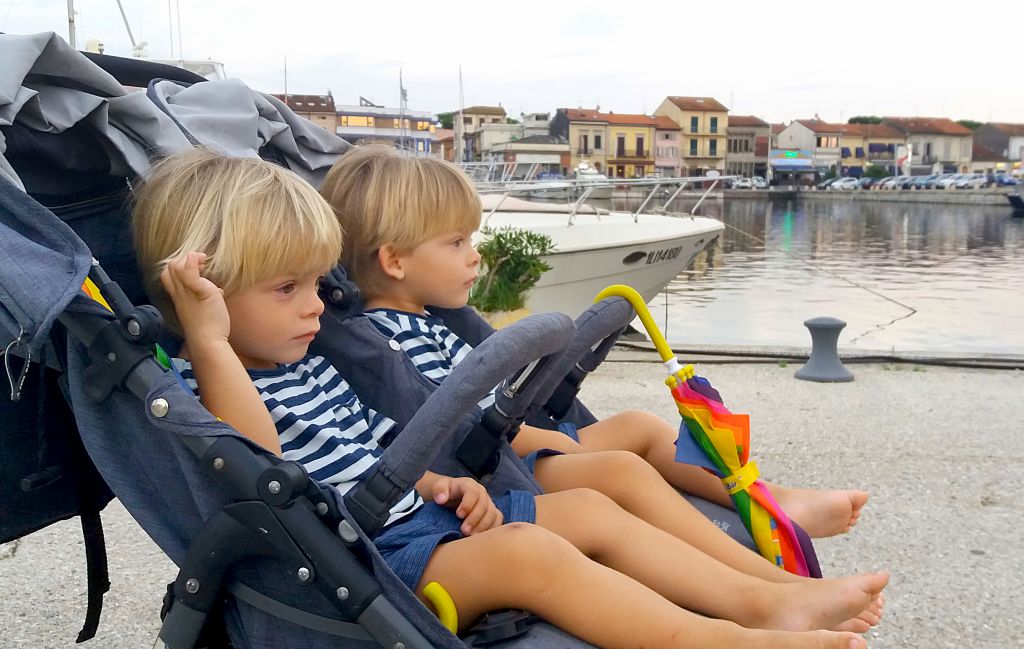
Villa Paolina holds a special place in the architectural look of Viareggio. This luxurious Art Nouveau villa was built in the 19th century for Napoleon’s sister, Pauline Borghese.
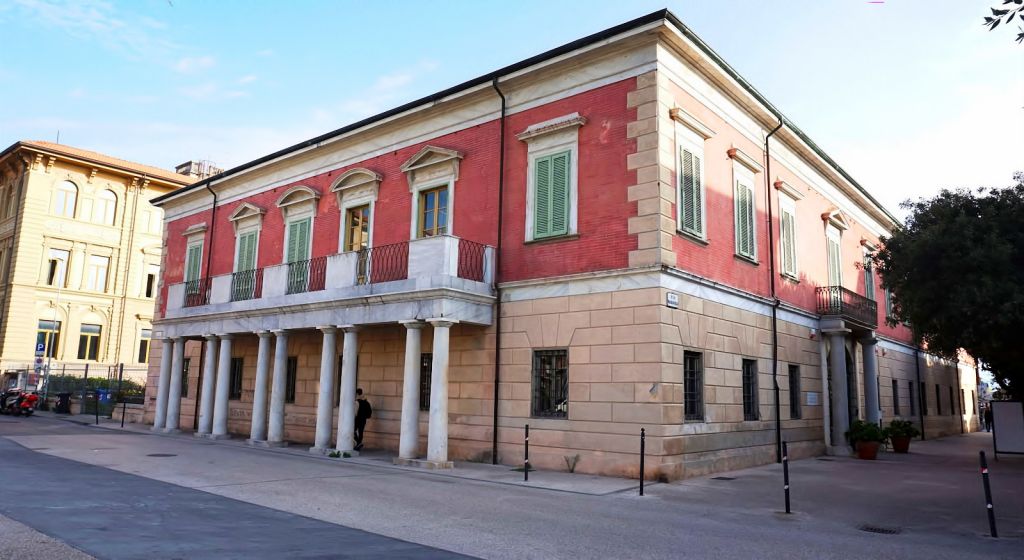
While the building’s face is not that impressive, the interior is full of frescoes, sculptures, Murano glass chandeliers, and carved furniture. Today, the villa houses a museum dedicated to the history of the city.
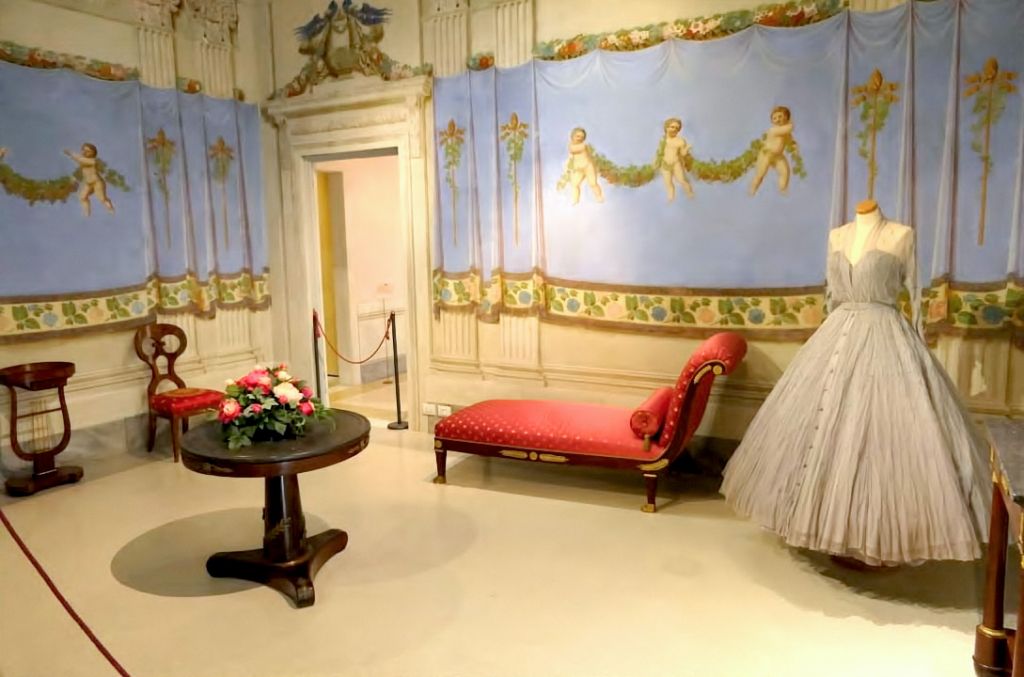
Viareggio is a play of lights and darks, where contemporary buildings stand side by side with historical structures. Here we found the ancient Matilda Tower, which now houses a hotel.
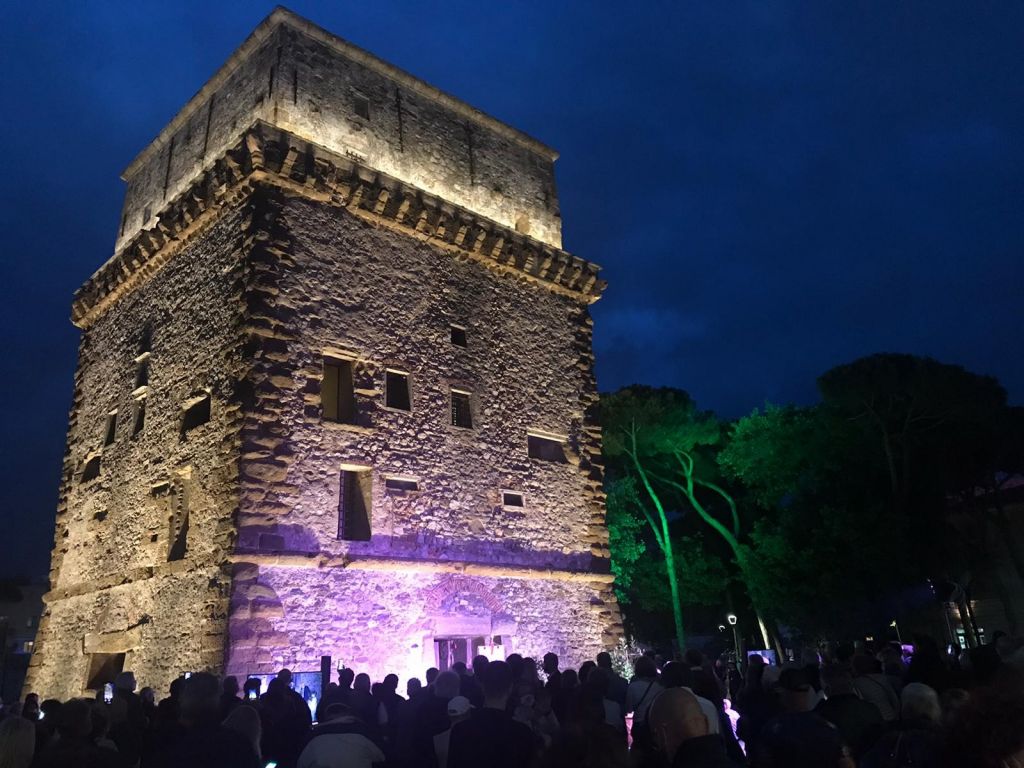
As well as the more modern building of the maritime museum.
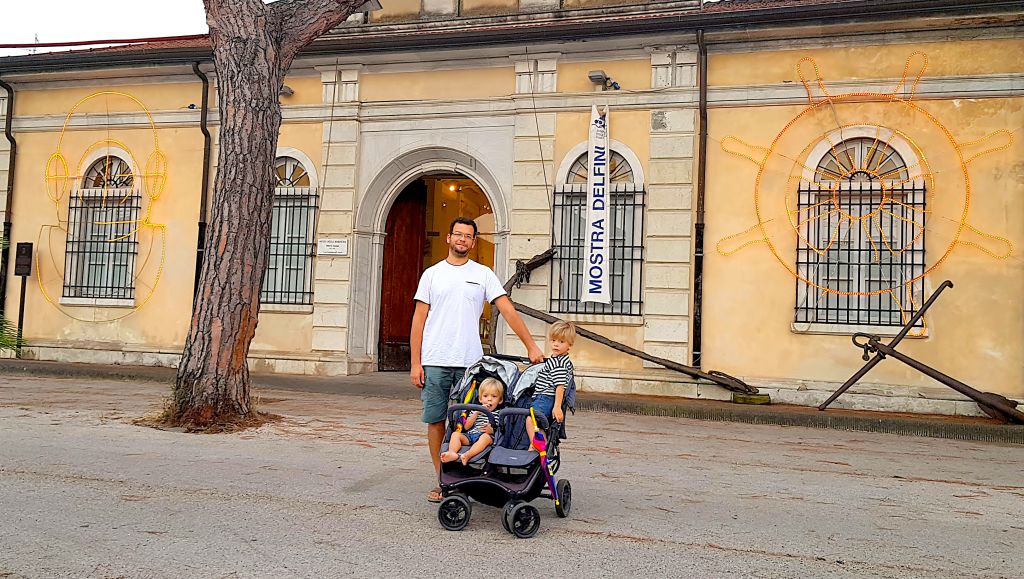
Livorno: The City of 100 Nations and Two Fortresses
We said goodbye to the captivating Viareggio and proceeded with our exploration of Tuscany. Our next stop was Livorno, a port city and the center of Italian shipbuilding.
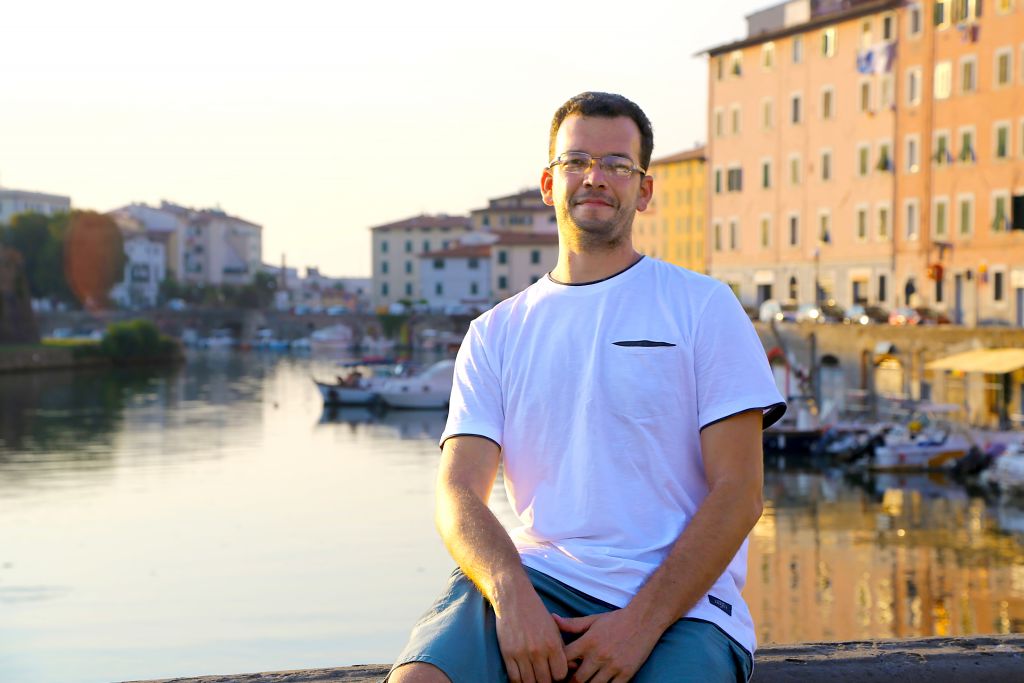
When we came to Livorno, we were amazed by the multitude of liners and different smaller vessels docked along the city’s waterfront. Our stroll through the lively port, with dockworkers, sailors, and vibrant containers, immersed us in the atmosphere of active trading life.
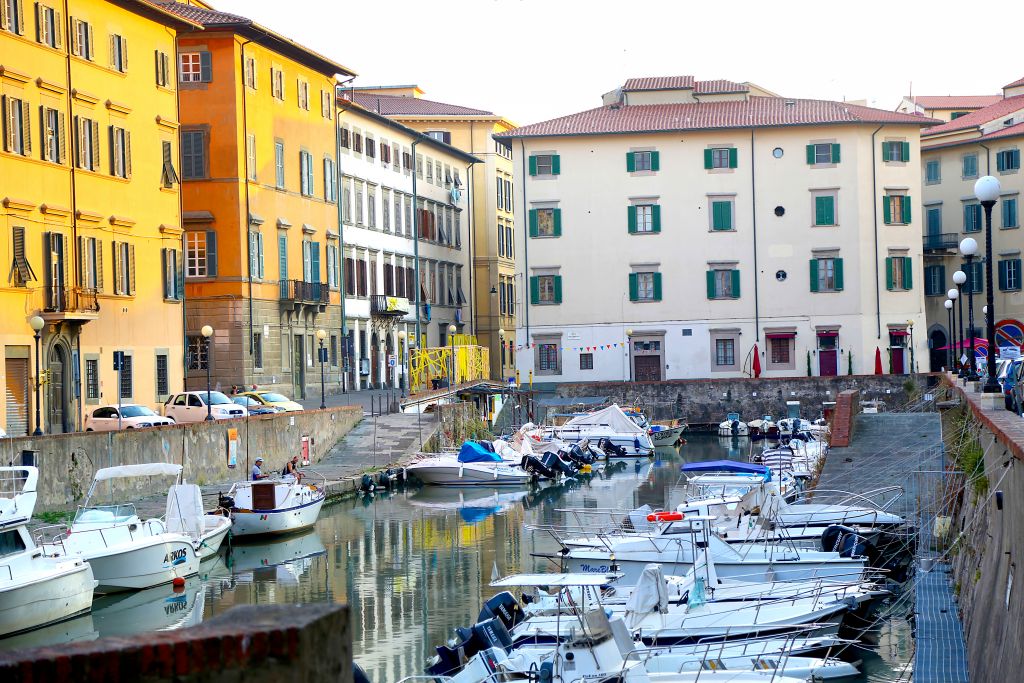
The key features of this location are two fortresses: Fortezza Vecchia and Fortezza Nuova. The official history of Fortezza Vecchia traces back to the 14th century. It was constructed as a maritime fort by the Pisans, who governed the village of Livorno at the time.
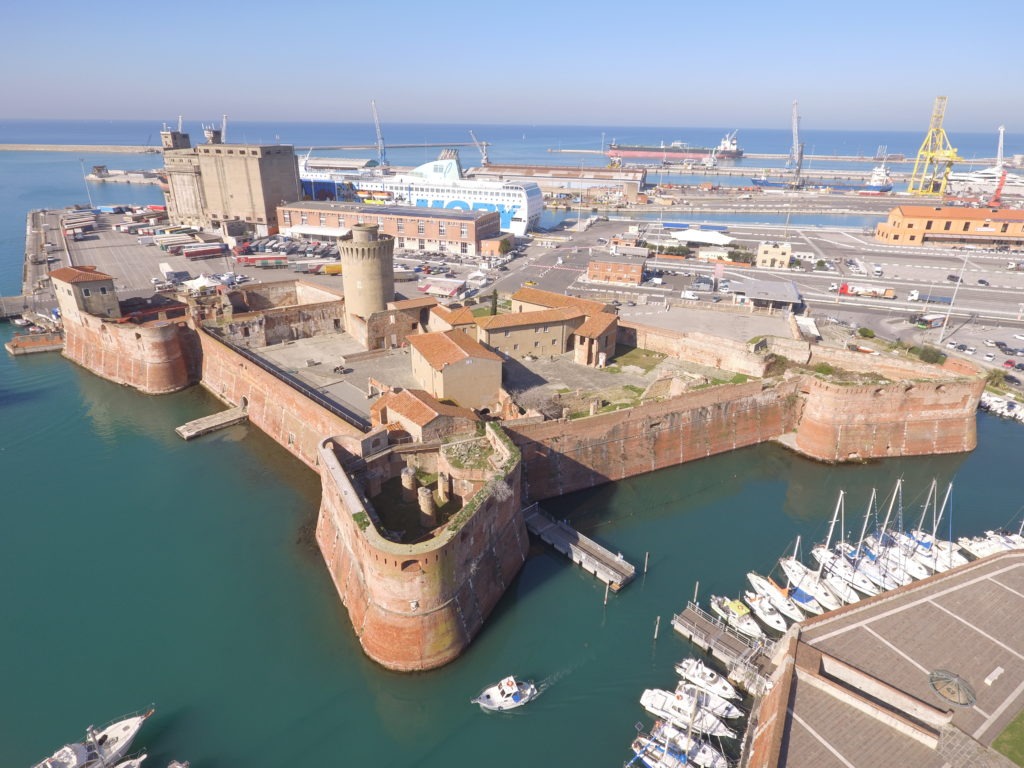
However, archaeological discoveries at the site of the fortification also indicate settlements from the Bronze and Iron Ages.
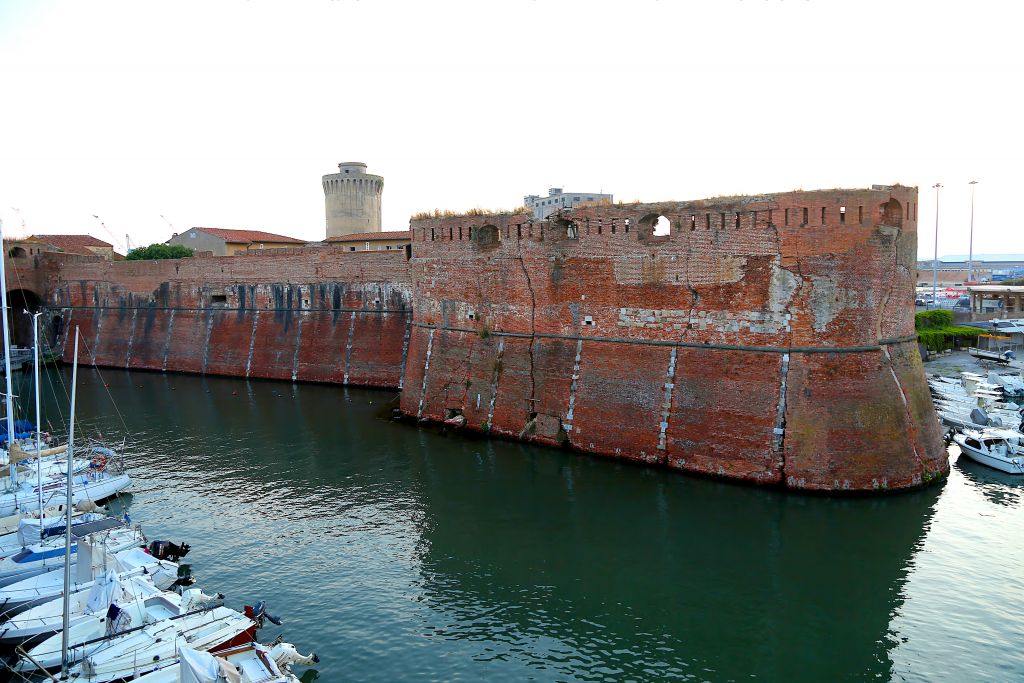
World War II almost completely destroyed Fortezza Vecchia. The fortress we witnessed is not the original structure. It is a meticulous reconstruction by skilled workers who worked on it. The restoration began in the 1970s of the past century and is still ongoing.
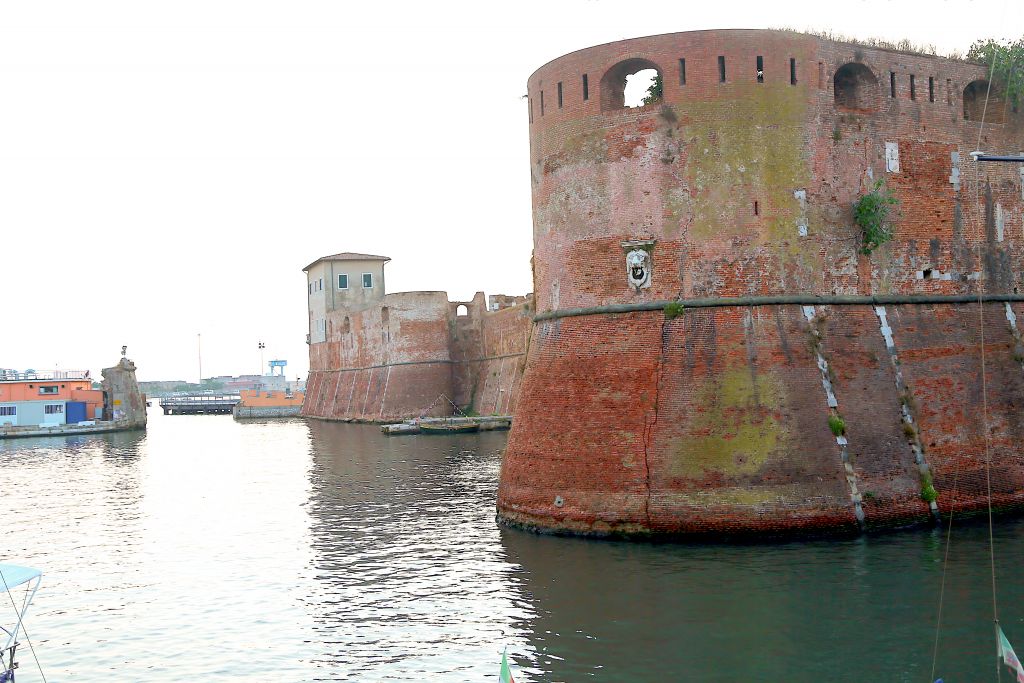
Fortezza Nuova and Fortezza Vecchia are linked by waterways. “Fortezza Nuova” means “New Fortress” in Italian.
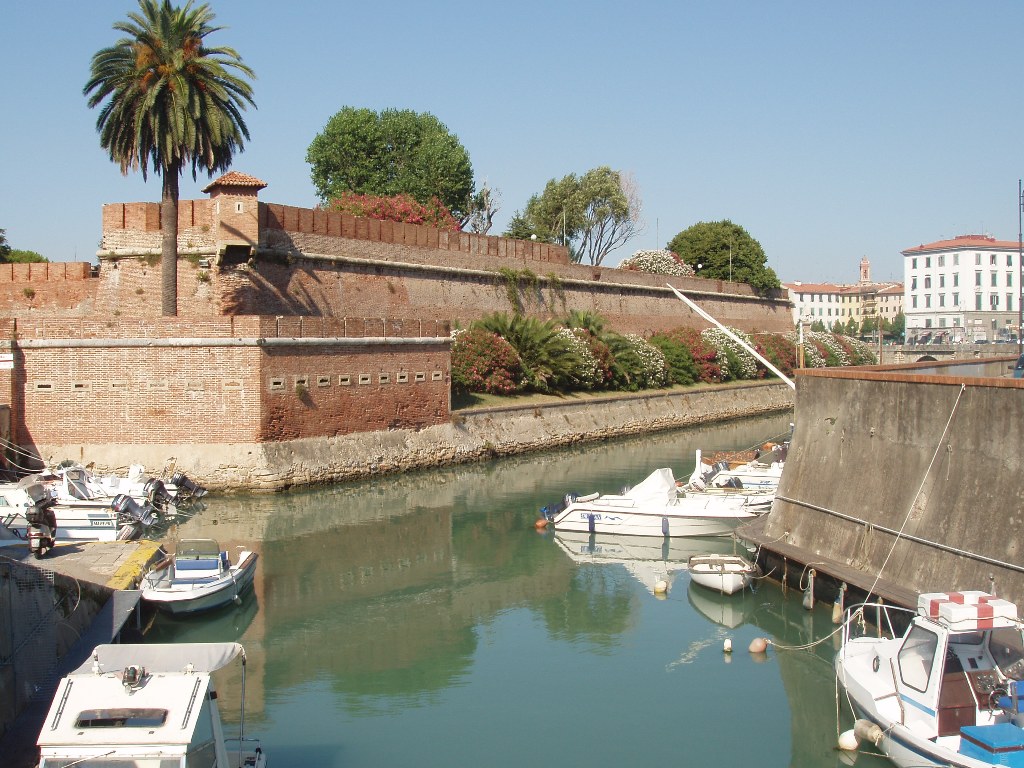
The initial plan of the authorities was to build a system of pentagonal moats with five bastions at each corner. It was supposed to encircle Fortezza Vecchia and be the city’s first line of defense. The plan evolved over time, and Fortezza Nuova was constructed in the 16th century.
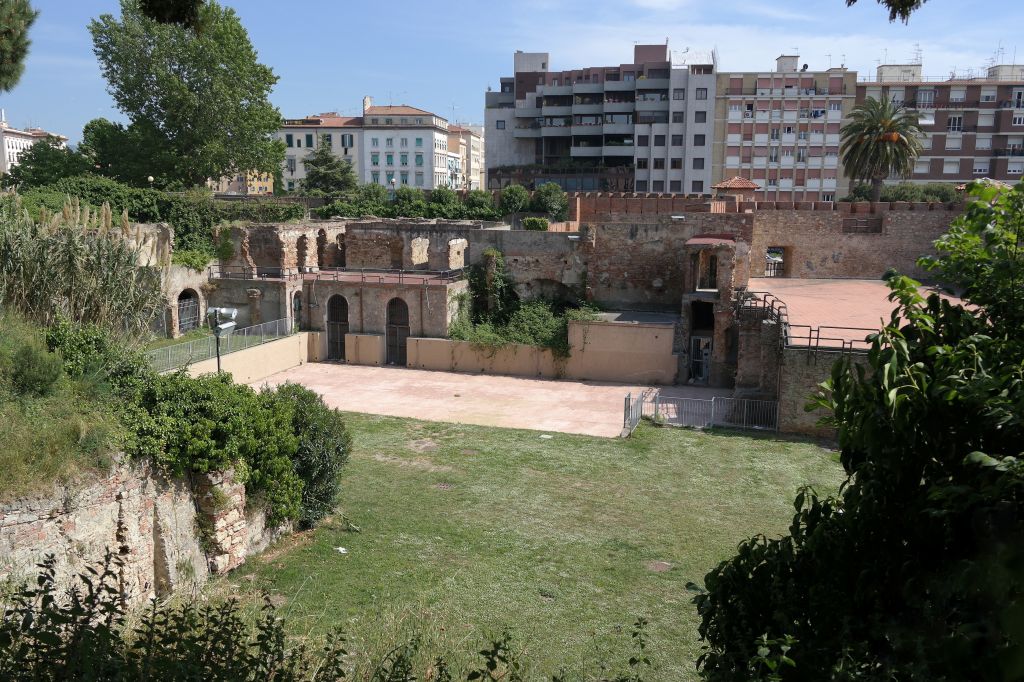
Fortezza Nuova is one of the largest fortresses in Italy. Since its inception, it defended the city from enemies and endured numerous sieges. Today, it stands as both a historical monument and a popular tourist destination in Livorno.
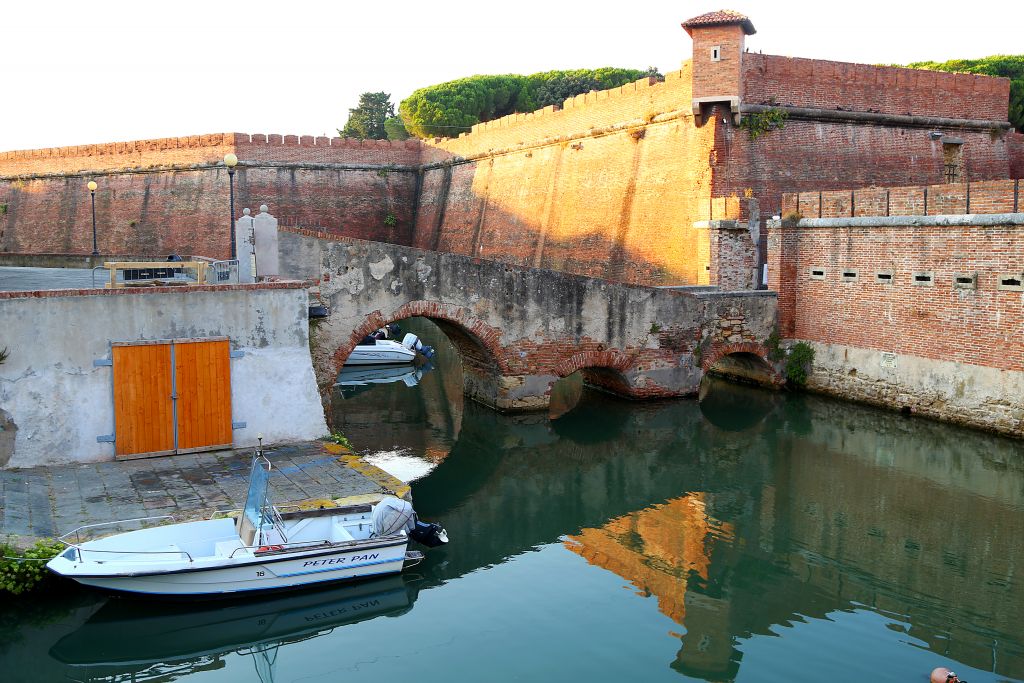
The city has always been a prominent trading hub. It attracts sailors and immigrants of different nationalities, including Armenians, Greeks, Ukrainians, Albanians, Romanians.
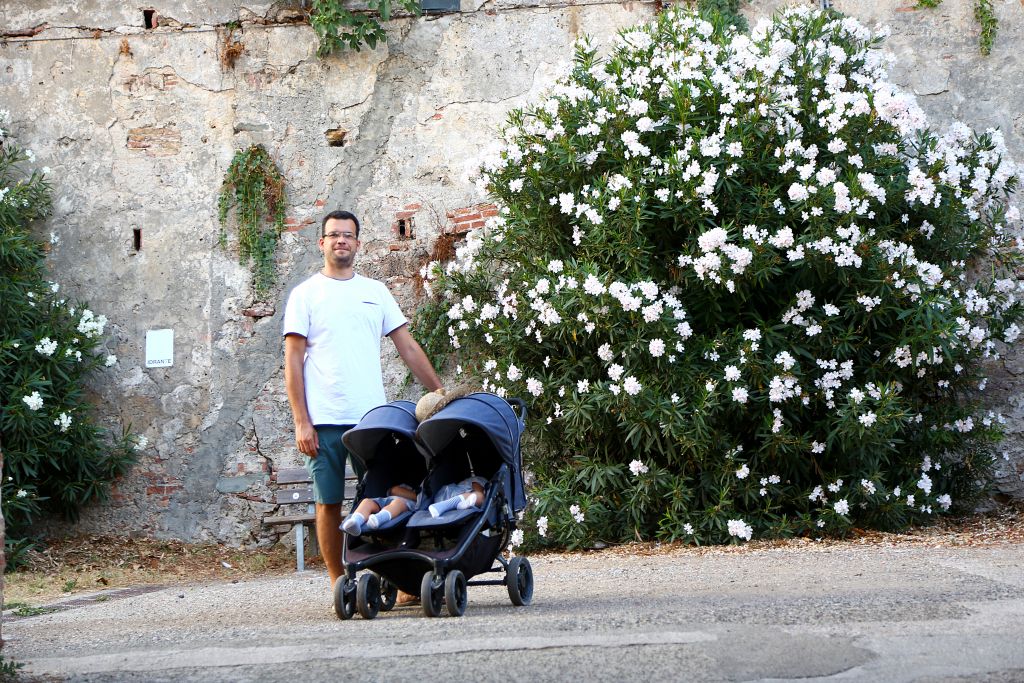
Here you can hear speeches in different languages and taste dishes of various cuisines of the world. That is why Livorno is called the city of 100 nations.
Livorno’s multiculturalism is reflected in its multiple events. The Greek festival Sagra del Pesce allows residents to savor the traditional cuisine of the country, while the Effetto Venezia festival transforms the city into a Venetian carnival.
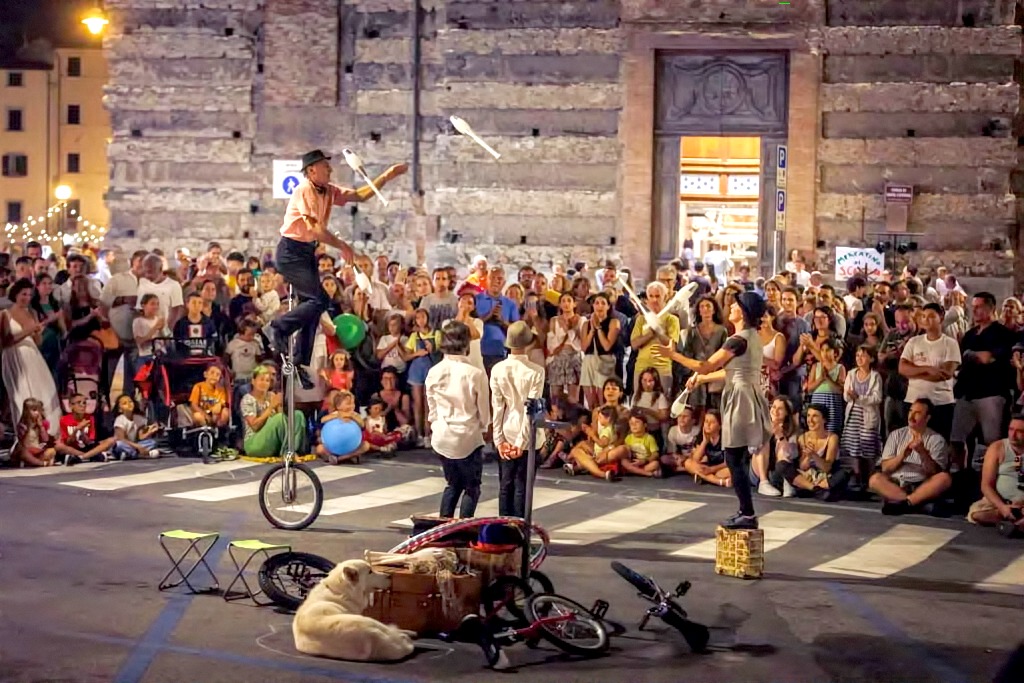
Jews stand as the most notable immigrant community here, which had a profound impact on Livorno. Fleeing persecution in Spain and Portugal in the 16th century, Jews established one of the largest and most influential Jewish communities in Europe. They enriched the city with their traditions, language, culture, and economic contributions. Traces of their heritage, including the synagogue and the Jewish cemetery, remain even today.
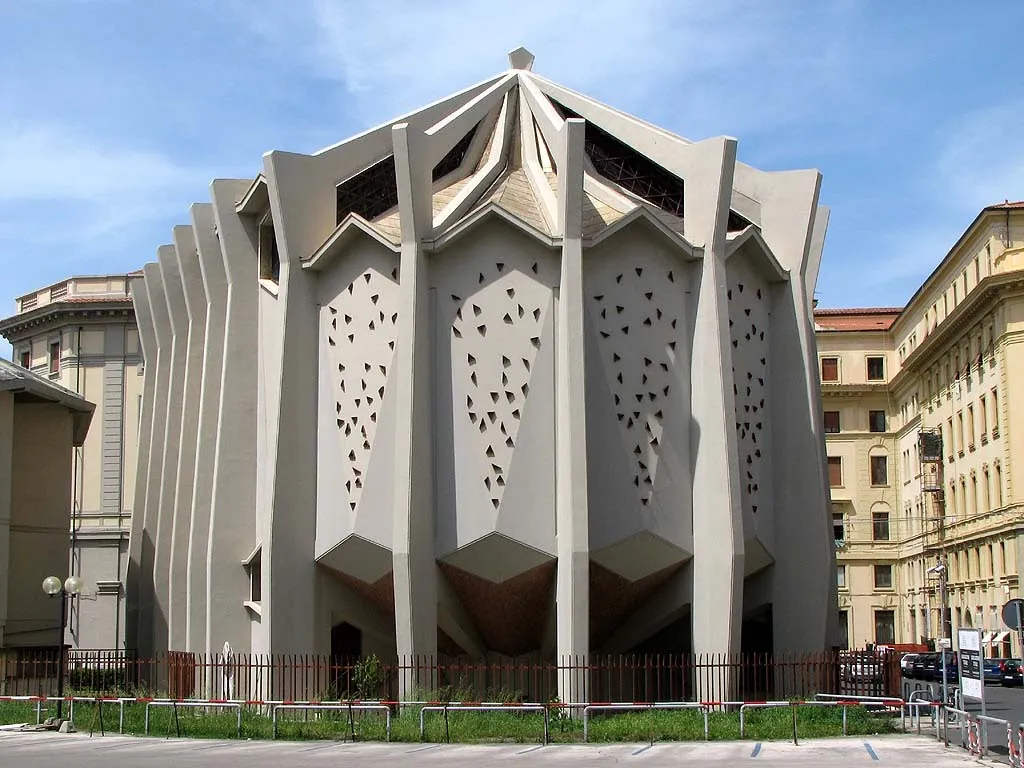
Pisa: Treasures Beyond the Leaning Tower
Our arrival in Pisa led us straight to the Piazza dei Miracoli, also known as the Square of Miracles. It houses four iconic landmarks: the Pisa Cathedral, the Baptistery, the Camposanto Monumentale cemetery, and the Leaning Tower of Pisa, the star of the show.
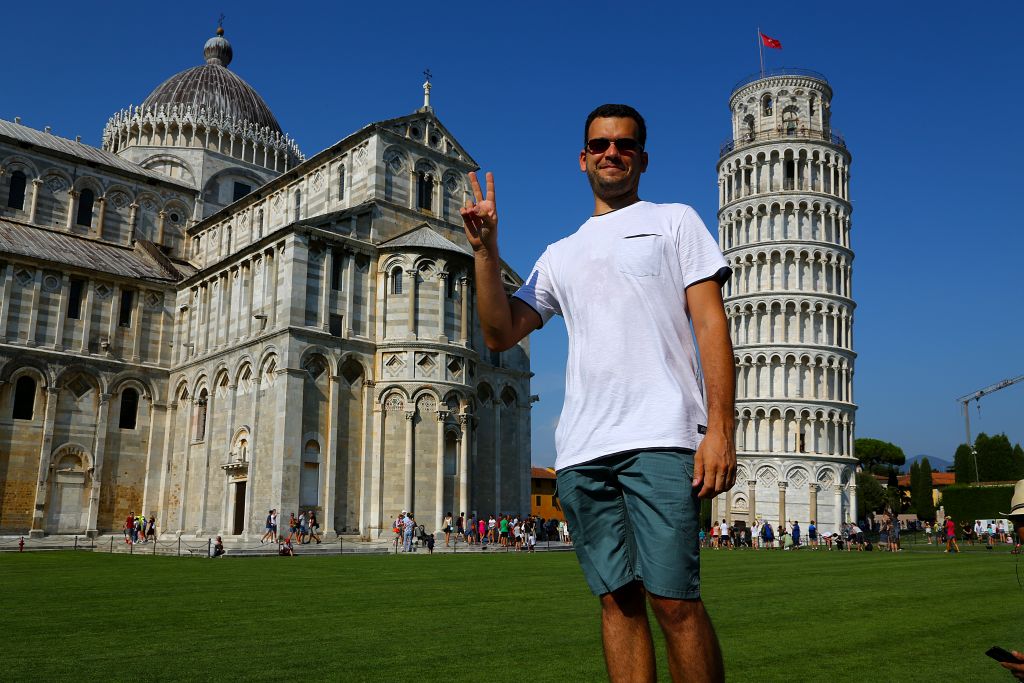
The tower boasts a fascinating history. Its construction began in the 12th century but was halted for a year due to the subsidence of the clay soil. The subsequent construction spanned 200 years, and the tower has been undergoing continuous restoration ever since.
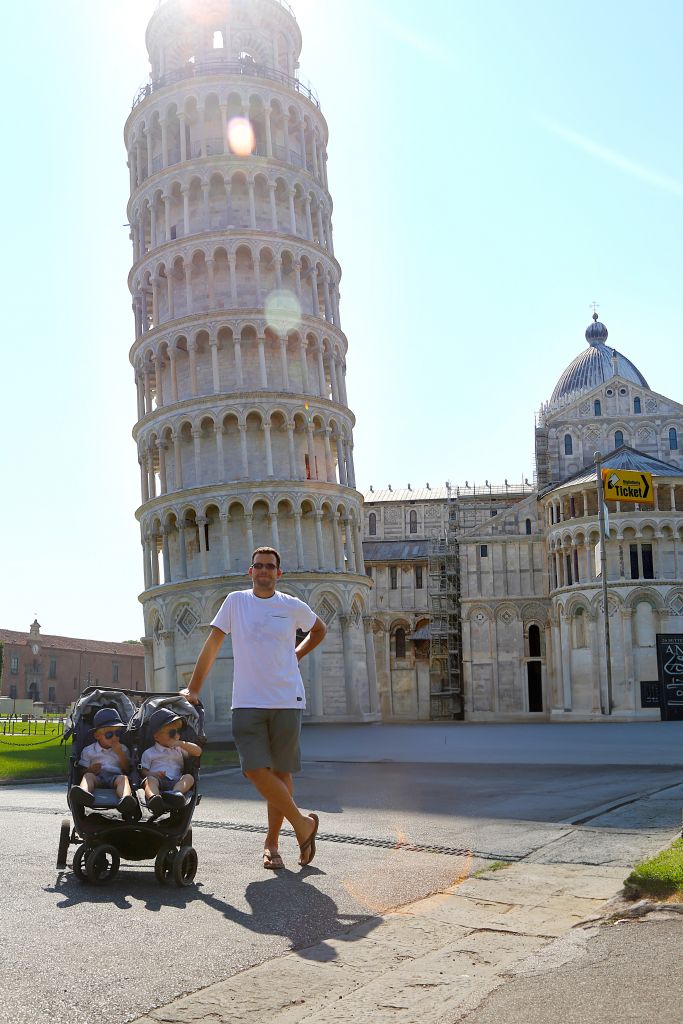
The tower’s tilt exceeds 5 degrees and is constantly increasing and decreasing. This is attributed to ground movement, groundwater, and human intervention.

The building’s face is a blend of Romanesque, Pisan, and Byzantine styles. Some experts even compare it with a minaret, suggesting a potential influence of Islamic architecture.
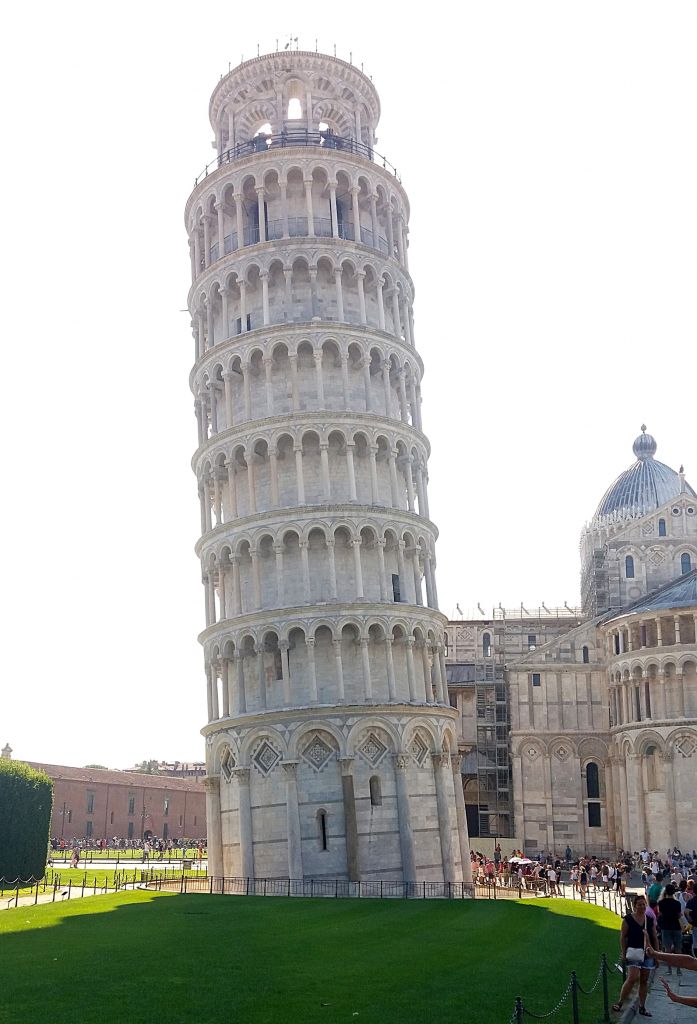
The tower undoubtedly captivates tourists with its uniqueness. But there is the equally magnificent Pisa Cathedral in its shadows, which deserves far more attention than it usually receives.
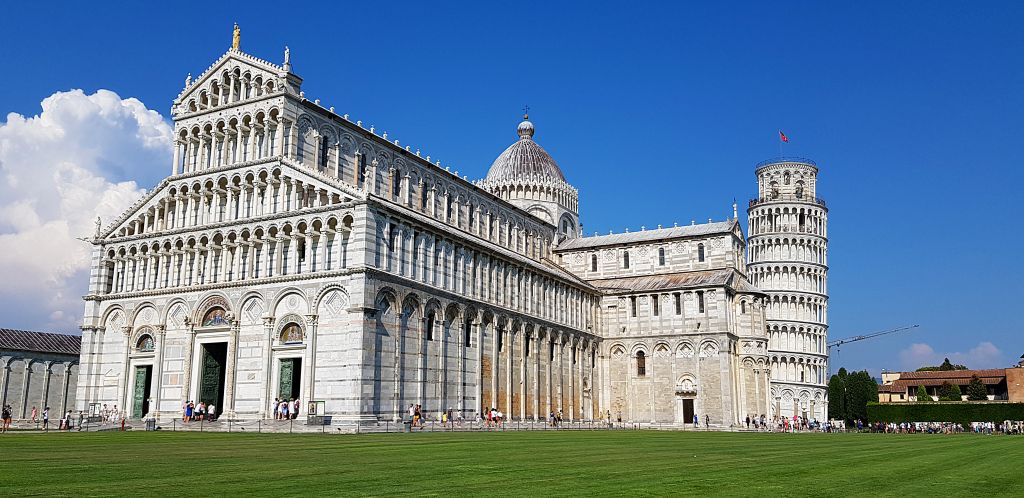
The cathedral stands as a stunning testament to Romanesque architecture. Every decorative element seems to tell a story: the austere lines of the columns, the graceful arches, and the radiant mosaics mesmerize with their grandeur.
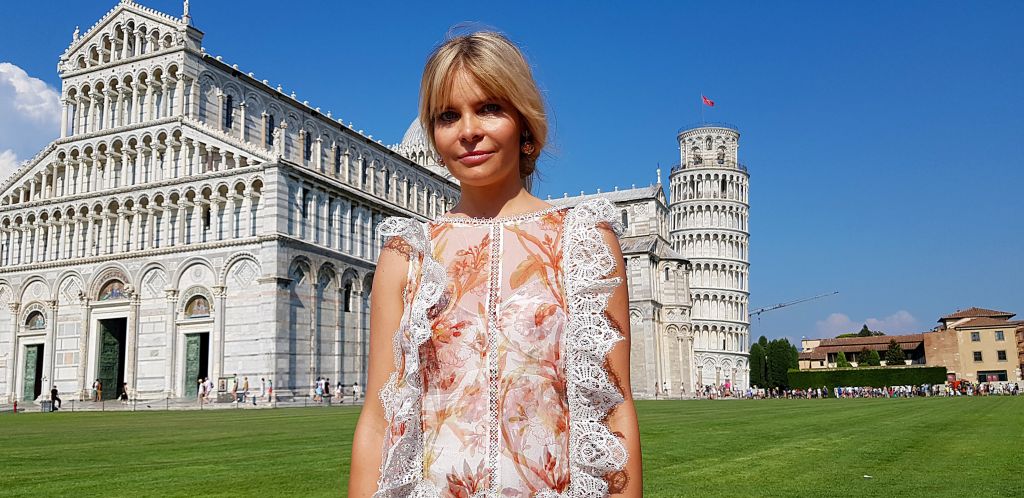
The cathedral’s construction began in the 11th century after the Pisans plundered Palermo and used part of the spoils for this pious endeavor. The building process spanned two centuries, which was typical for medieval constructions.
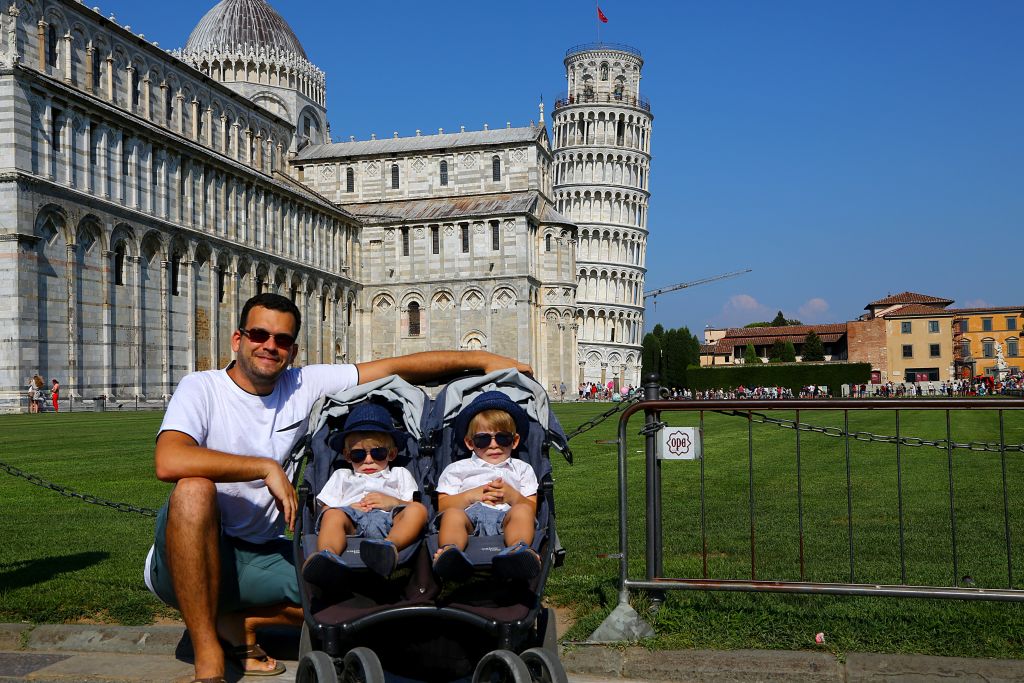
At the entrance, we saw the bronze door, which depicts the life of the Virgin Mary and the New Testament.
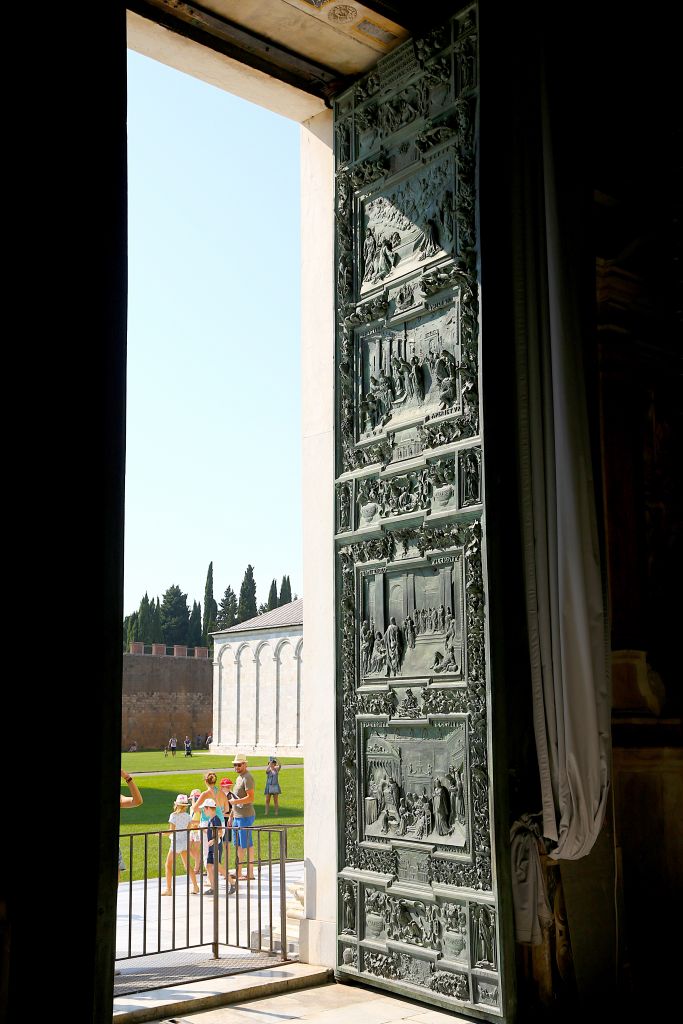
As we crossed the threshold of the Pisa Cathedral, we found ourselves in a majestic space. Imposing columns divided the space into three naves. The central nave features 12th–13th century frescoes, depicting the life of Christ and the Virgin Mary.
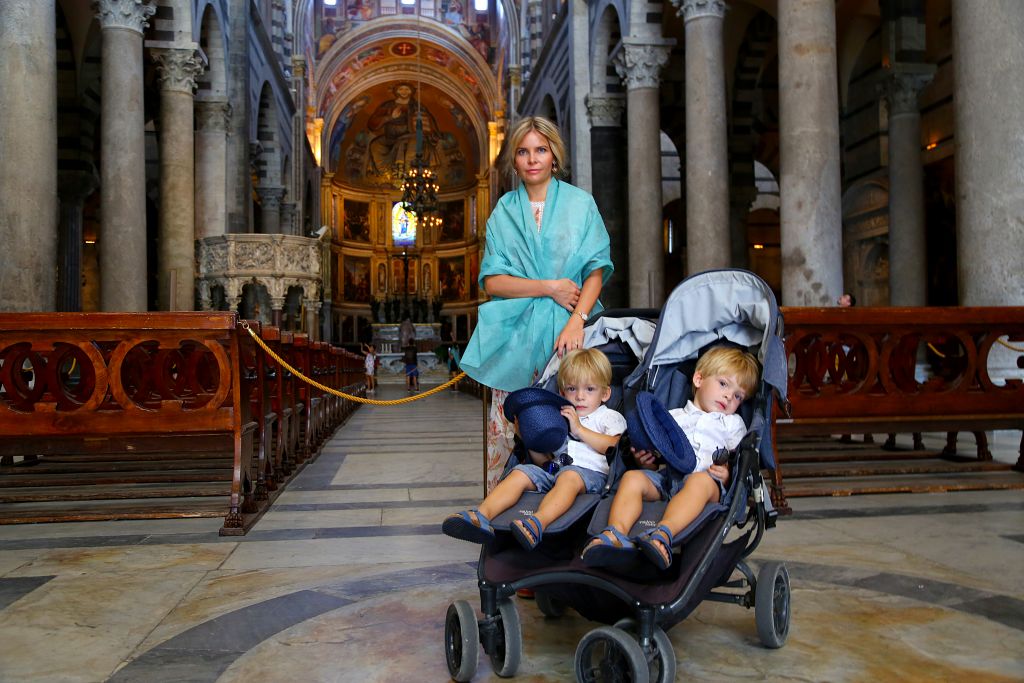
Our gaze was immediately drawn to the main altar, adorned with mosaics and sculptures. This is the focal point of the interior. It serves as the setting for the main religious ceremonies.
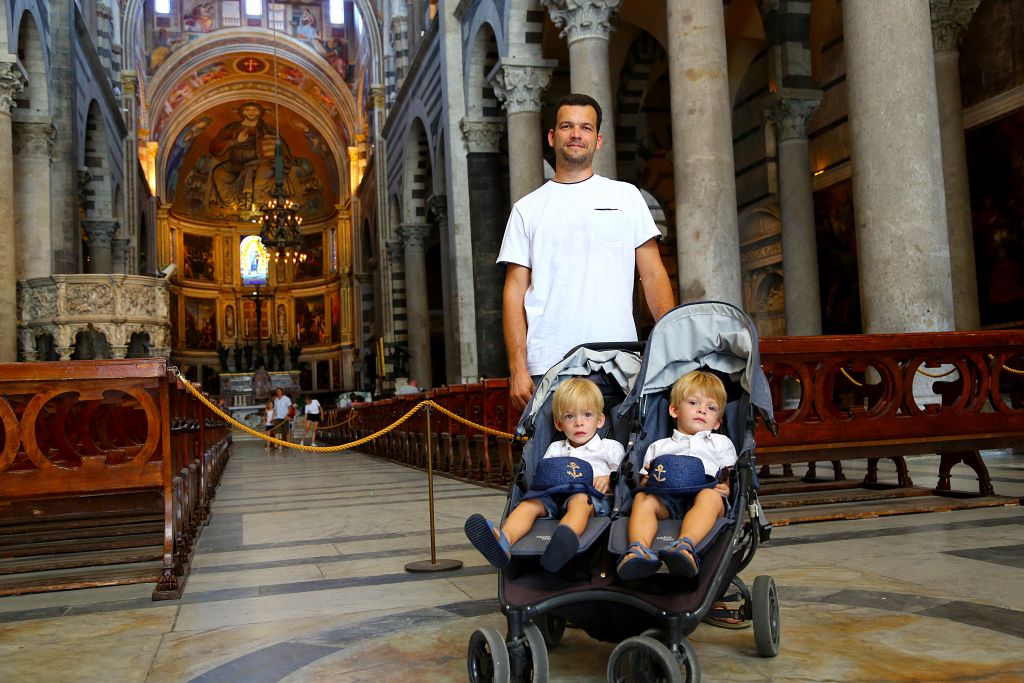
The center of the altar showcases a mosaic of Christ Pantocrator, flanked by images of John the Baptist and the Virgin Mary.
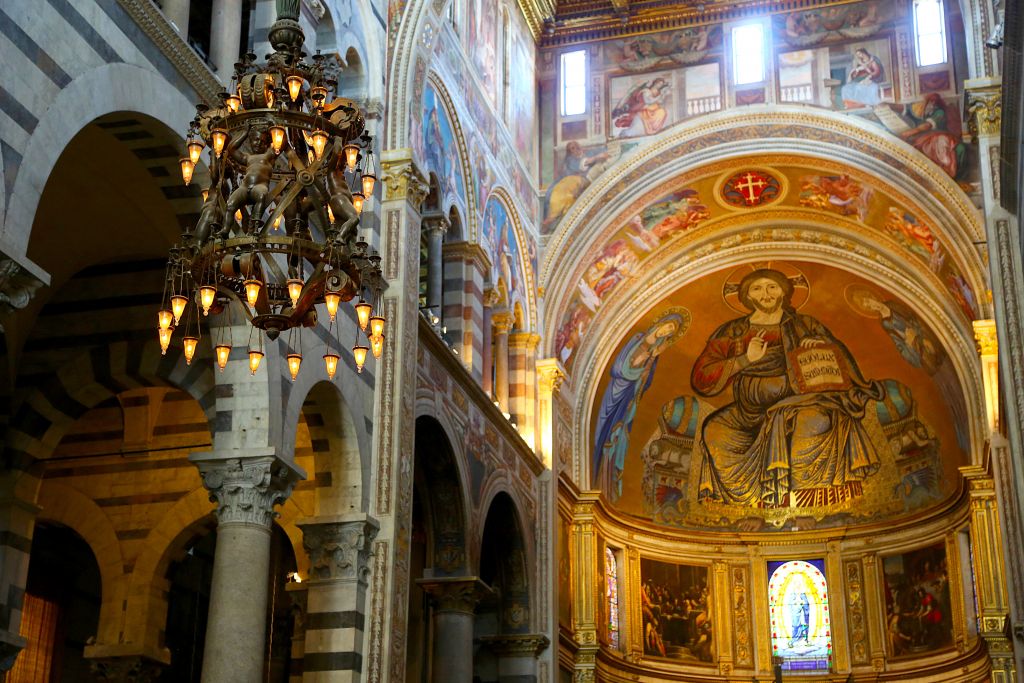
The walls and vaults are adorned with mosaics, creating an atmosphere of grandeur and serenity. These mosaics depict saints, angels, and various biblical scenes.
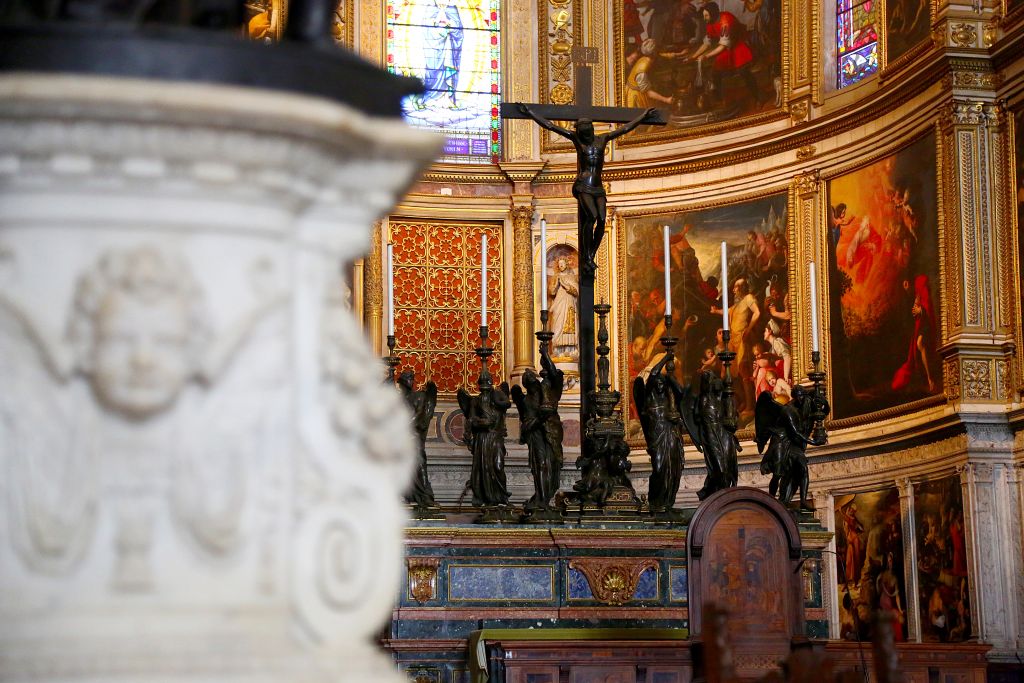
In contrast to the walls, the ceiling of the Pisa Cathedral is devoid of frescoes or mosaics. Crafted from wood, it boasts a coffered design. It is a ceiling divided into square or rectangular recesses known as coffers.
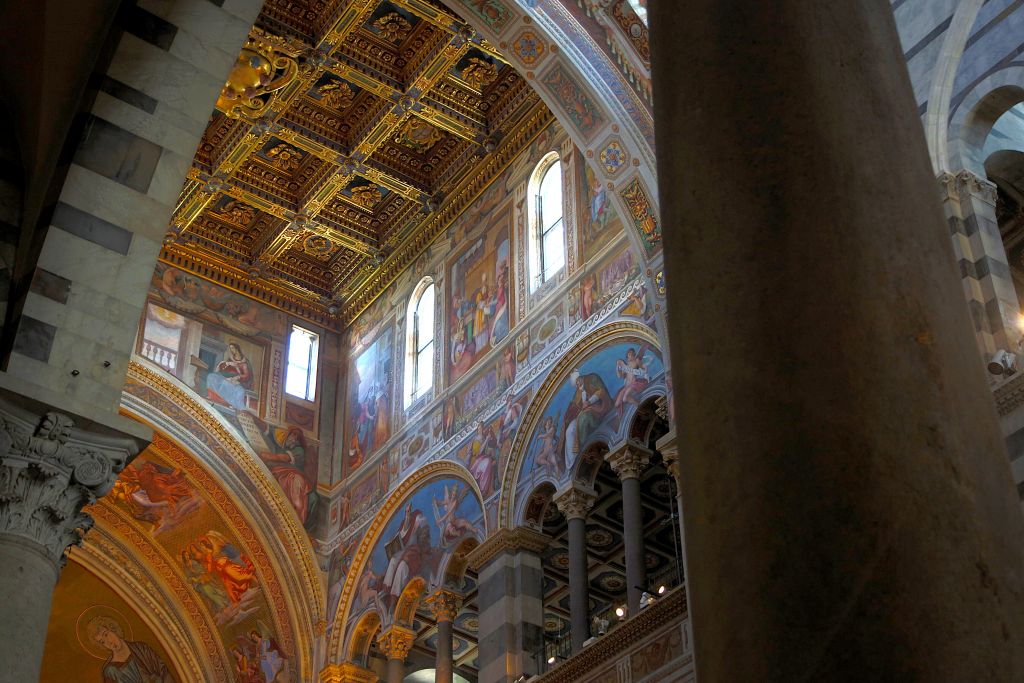
Each coffer is embellished with carvings, showcasing a variety of symbols, such as the Lamb of God, the dove, flowers, and geometric shapes.
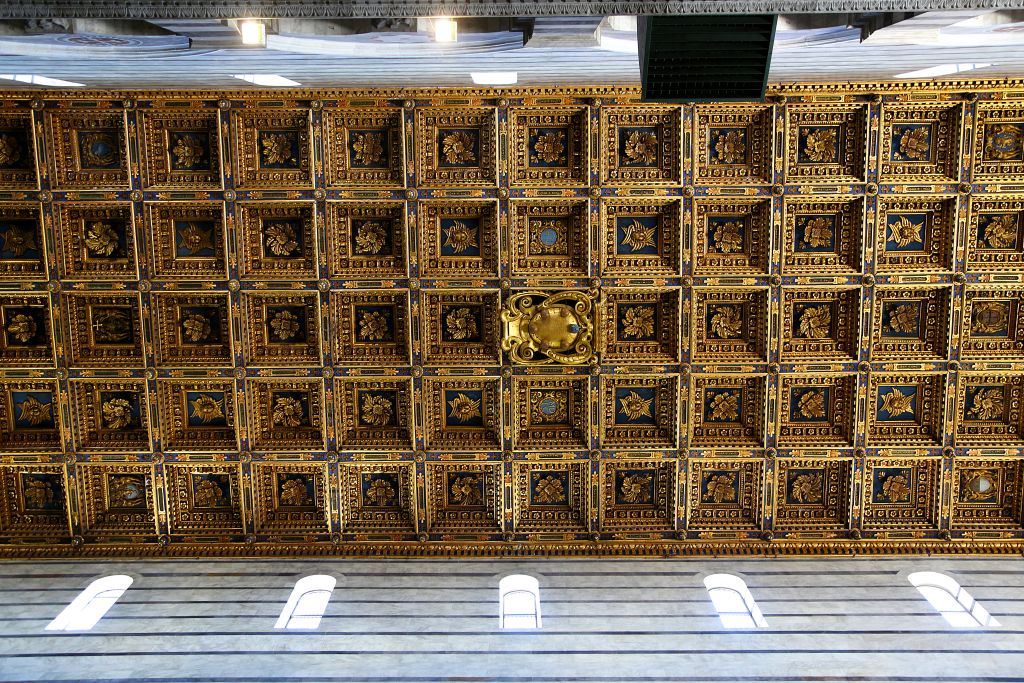
Standing beside the main entrance of Pisa Cathedral, the Baptistery of Pisa is another magnificent structure on the Square of Miracles.
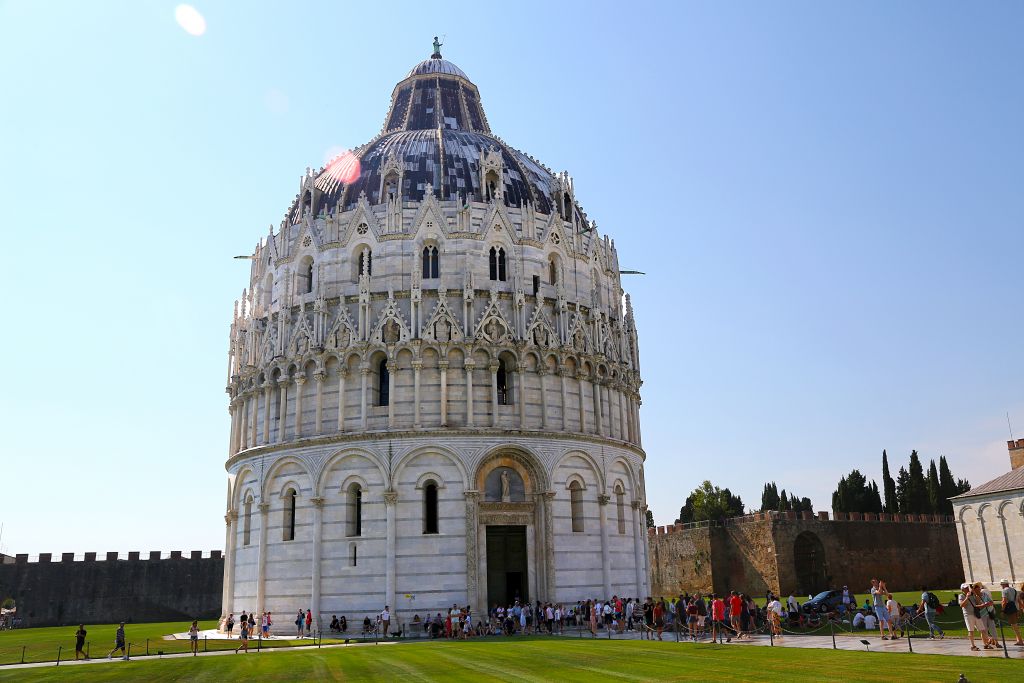
The Baptistery holds the title of the largest baptistery in the world. It is a dome building, encircled by a colonnade. Its face is adorned with arcades, loggias, and sculptures, while white marble, as well as green and colored marble accents, add to its visual beauty.
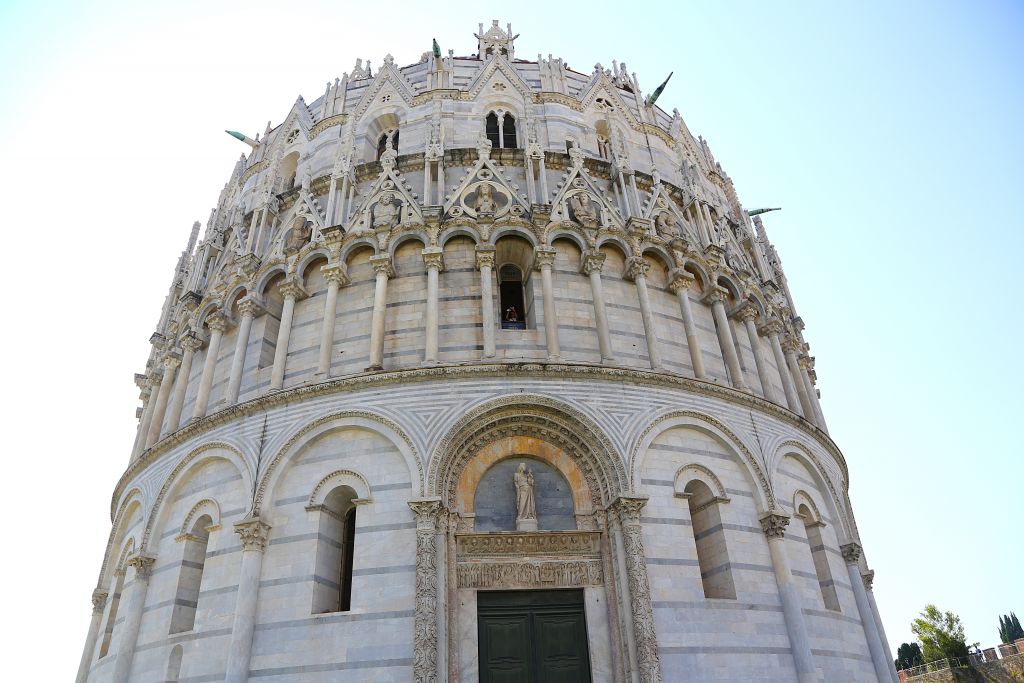
The Baptistery’s design is rich in symbolic meaning. The circular shape represents eternity, while the dome symbolizes the vault of heaven.
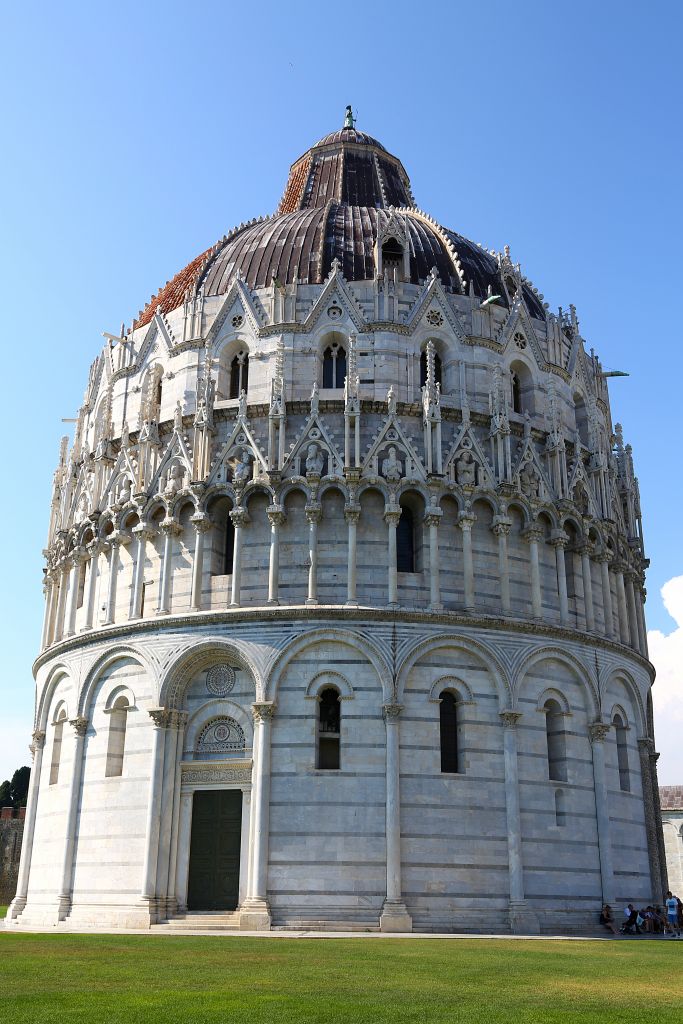
Just like the Leaning Tower, the Baptistery also tilts. Its tilt is about 0.6 degrees – it is a result of being built on the same unstable ground. Fortunately, this inclination poses no threat to the structure’s integrity.
The fourth structure gracing the Square of Miracles is the Campo Santo, which translates to “Holy Field”. The building’s face is characterized by 43 arches adorning its perimeter.
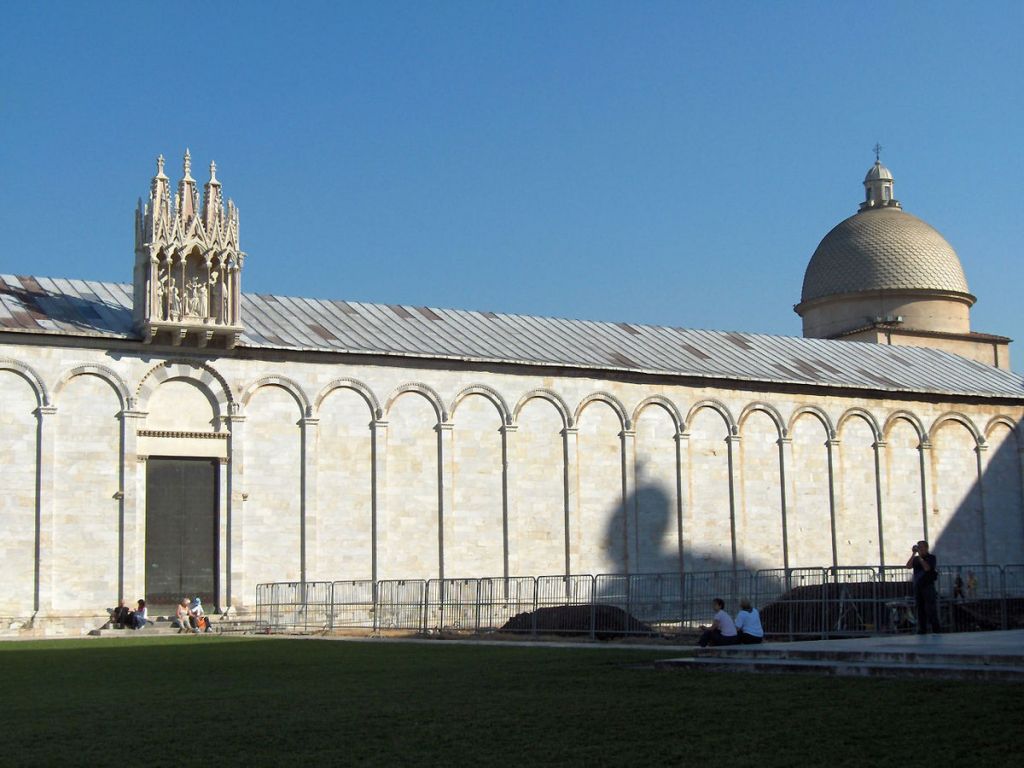
Initially, Campo Santo was envisioned as a church. The western section of the building represents the initial project, designed in the 12th century. However, construction was prolonged and eventually halted. Only in the 13th century, authorities revised the project and started transforming the unfinished church into a monumental cemetery. The eastern part of the cemetery was completed following the revised design.
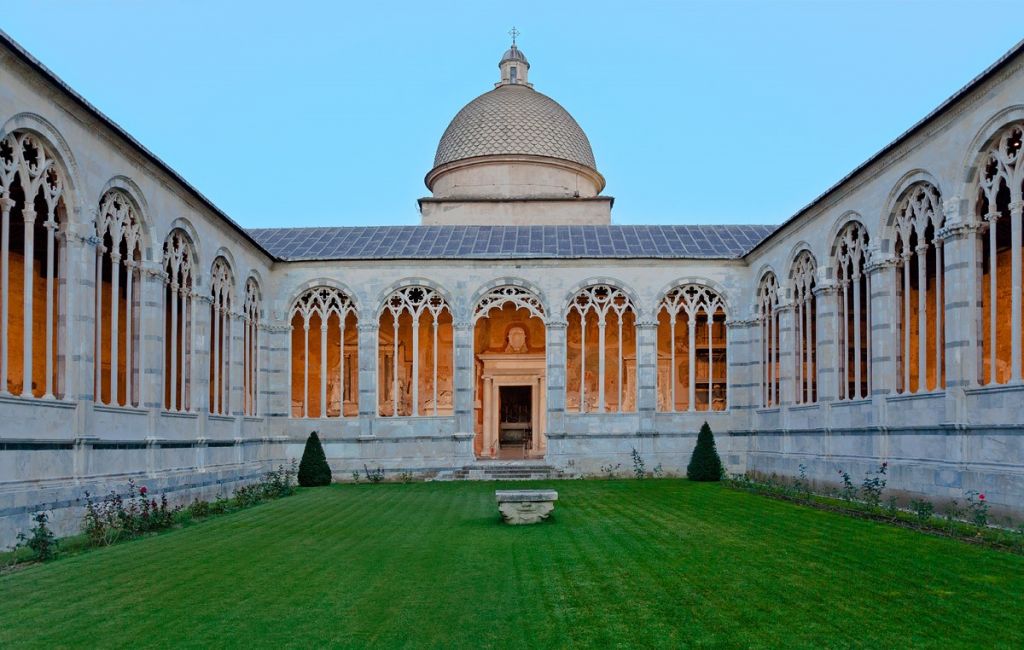
The Campo Santo is the resting place of many of Pisa’s nobles, artists, scientists, and politicians: Galileo Galilei, Andrea Pisano, and Silvestro de’ Medici.
Pisa’s Square of Miracles is an epicenter of tourism, with conversations in different languages, camera flashes, a brisk trade in souvenirs, the sale of portraits by local artists. This crowding can be overwhelming, but the lively atmosphere and excitement create a sense of festivity and joy. Probably, many of those who came here have just realized their dream to see the Leaning Tower with their own eyes.
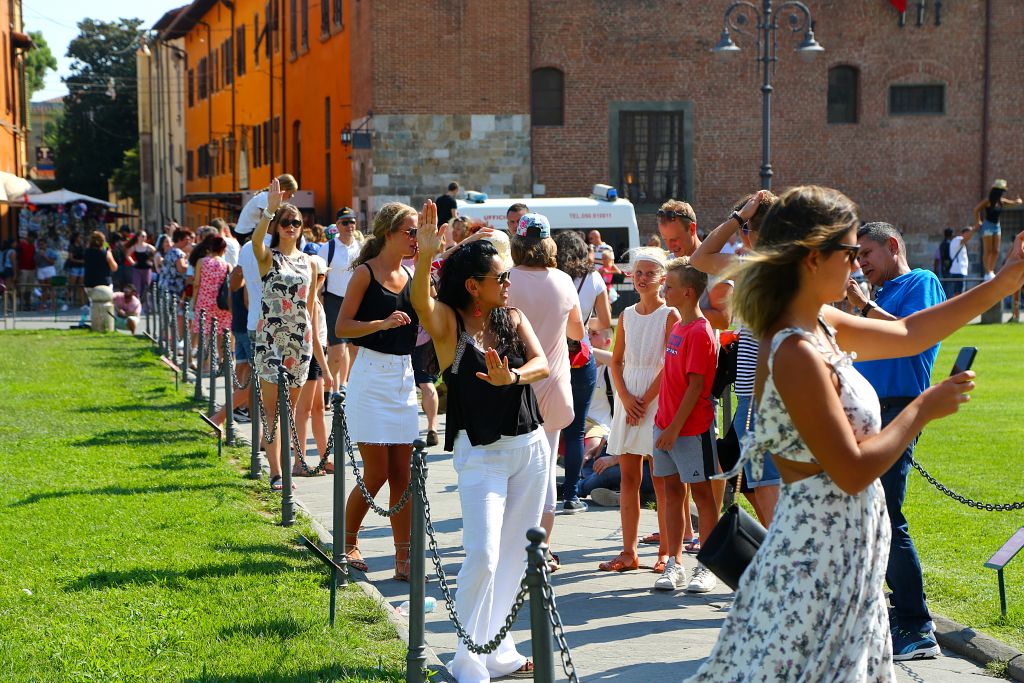
The Square of Miracles is not the only attraction worth visiting in Pisa. The historical center of the city holds the charming church of Santa Maria del Carmine. The church’s face is simple yet charming. This plain building is adorned with a few frescoes and two statues: John the Baptist and the Prophet Elijah.
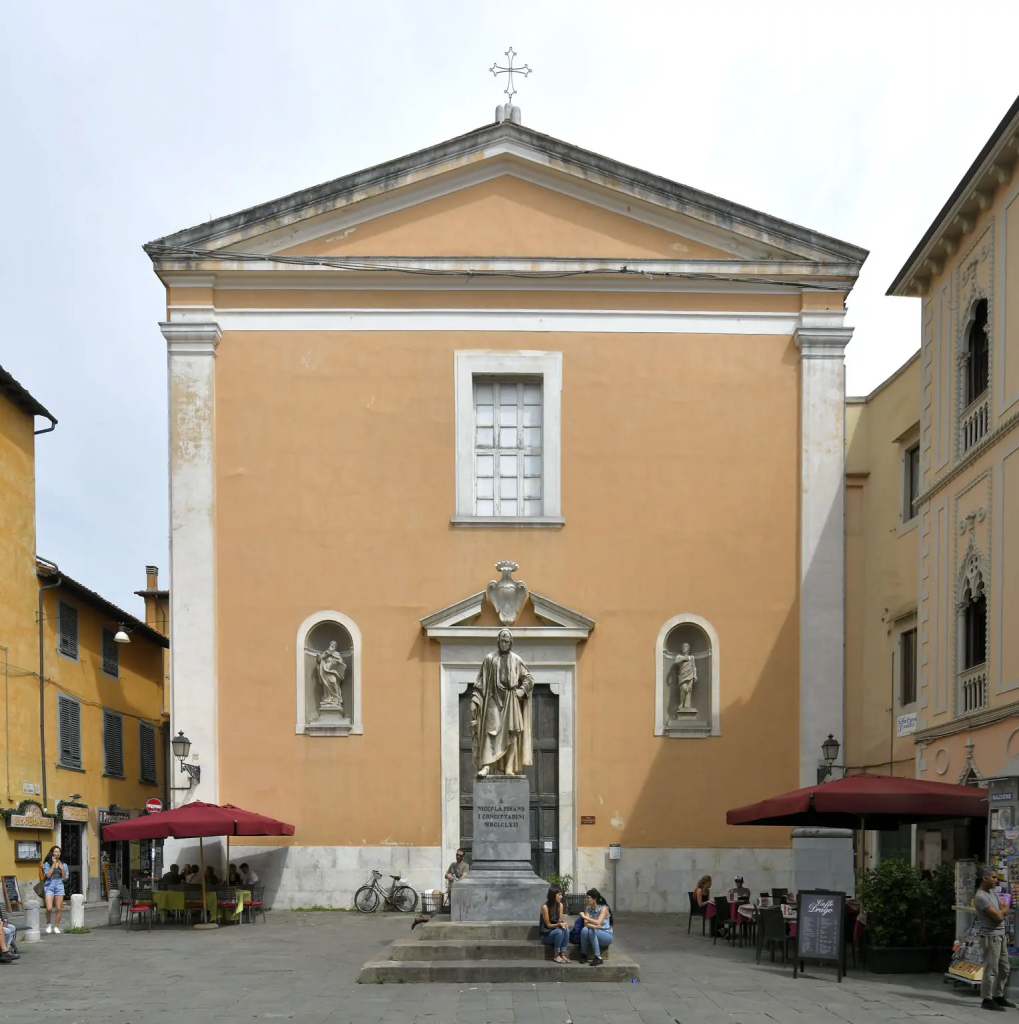
However, the true treasures of the church lie within. The interior is lavishly decorated with stone carvings and monumental Baroque altars.
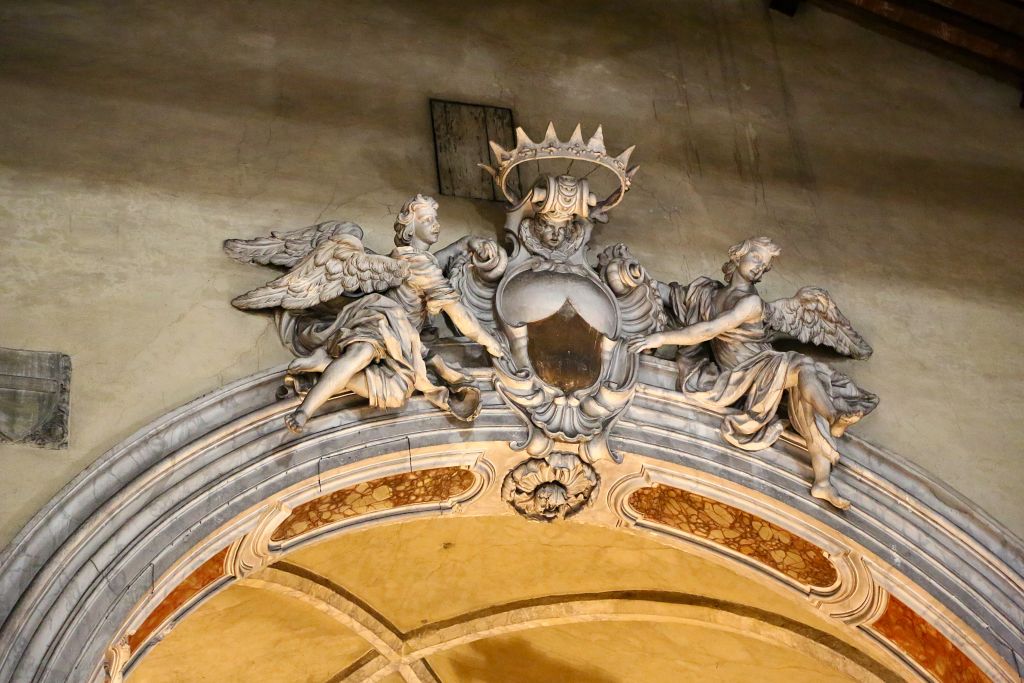
It also houses paintings by Italian artists. One of the most famous of them is Madonna and Child.
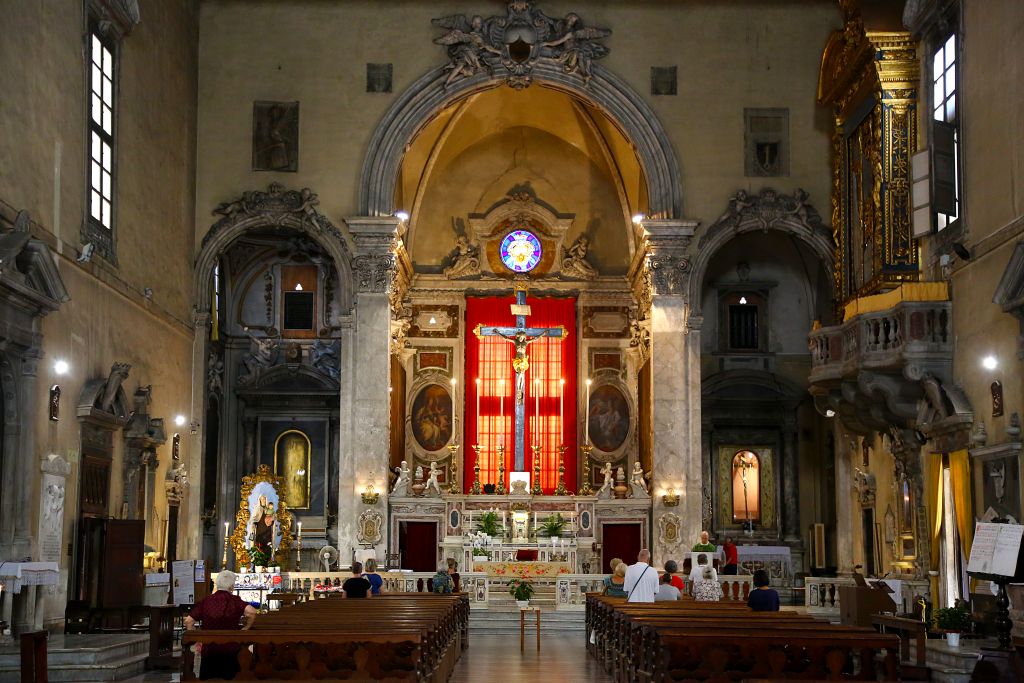
A short distance from Santa Maria del Carmine, on the very edge of the Arno River, there is another captivating church. It is the church of Santa Maria della Spina. It was initially known by a different name but was later given the distinctive title “Spina”. The word means “thorn” in Italian. The name refers to a thorn from Christ’s Crown of Thorns, which was brought here in 1333.
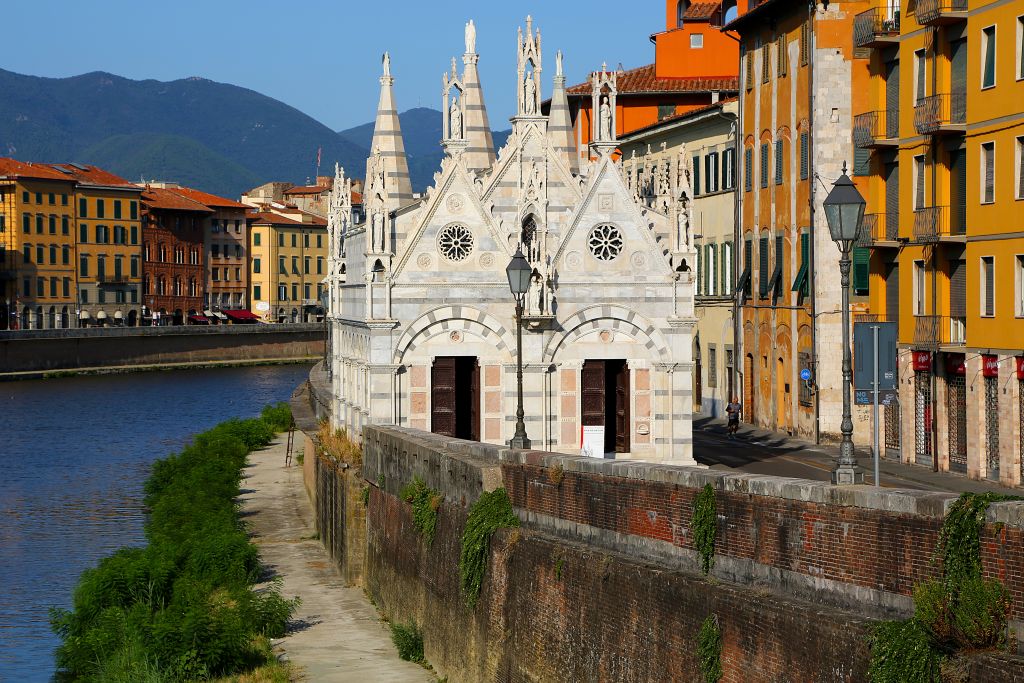
Santa Maria della Spina boasts a captivating story of relocation and restoration. In the 19th century, the authorities ordered to dismantle the church and rebuild it on a new site, a little higher up from the river. It was an attempt to protect the church from flooding. As a result, the church’s appearance slightly changed, and the thorn itself was later moved to another church.
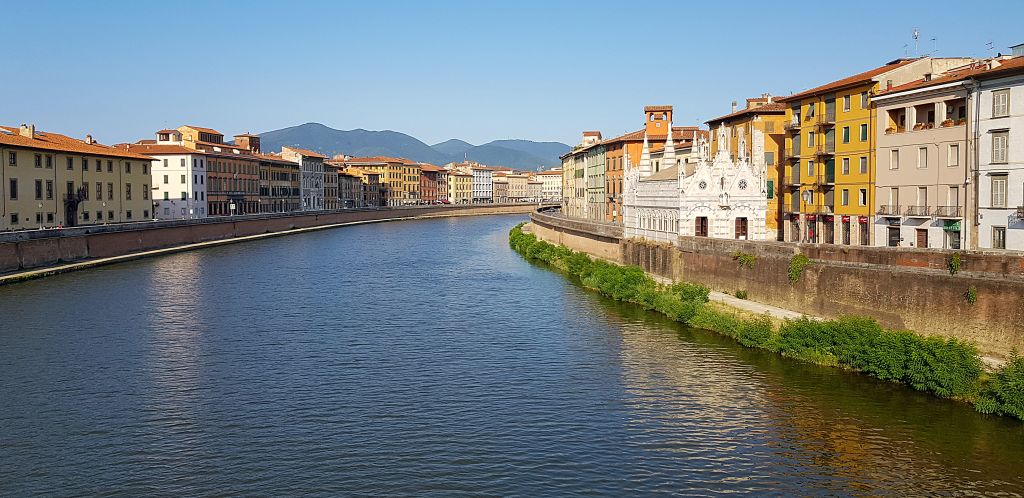
Caravan Palace also impressed us with its exterior.
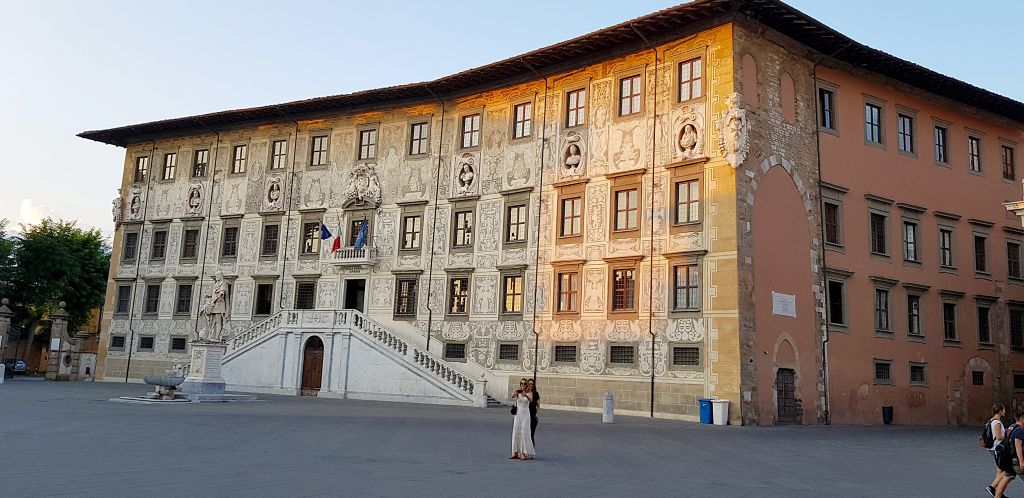
The name literally translates to “the Palace of the Convoy”. This is because the building belonged to the Order of Saint Stephen, and it served as a training ground for preparing future convoy participants for battles.
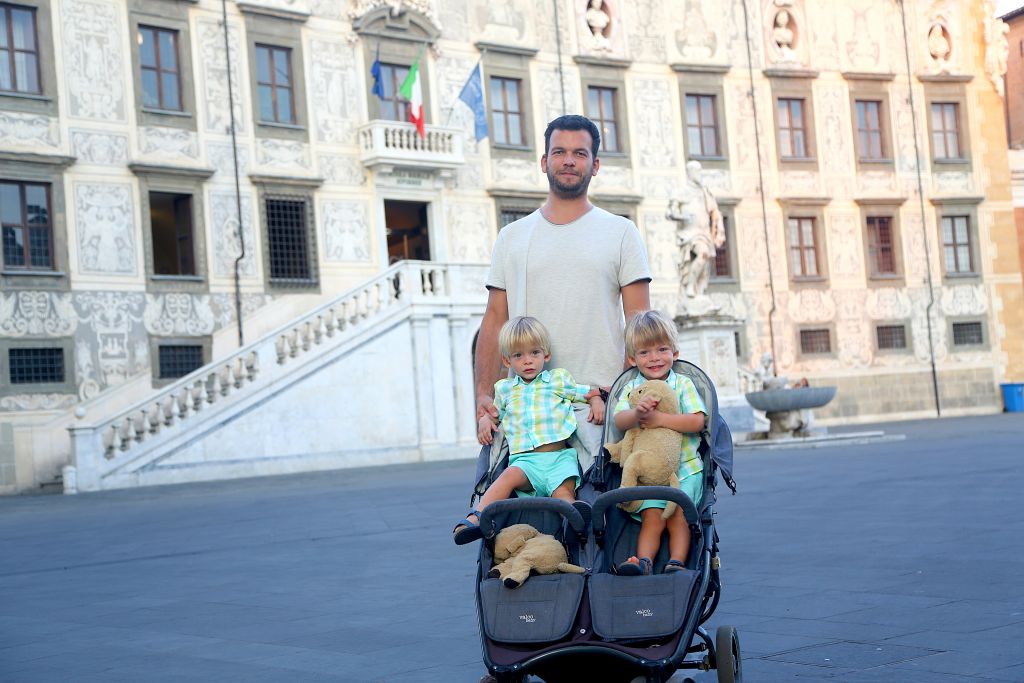
We were immediately struck by the most distinctive feature of the palace, sgraffito. This technique involves two-layer painting on wet plaster. The images depict various allegorical figures and zodiac signs.
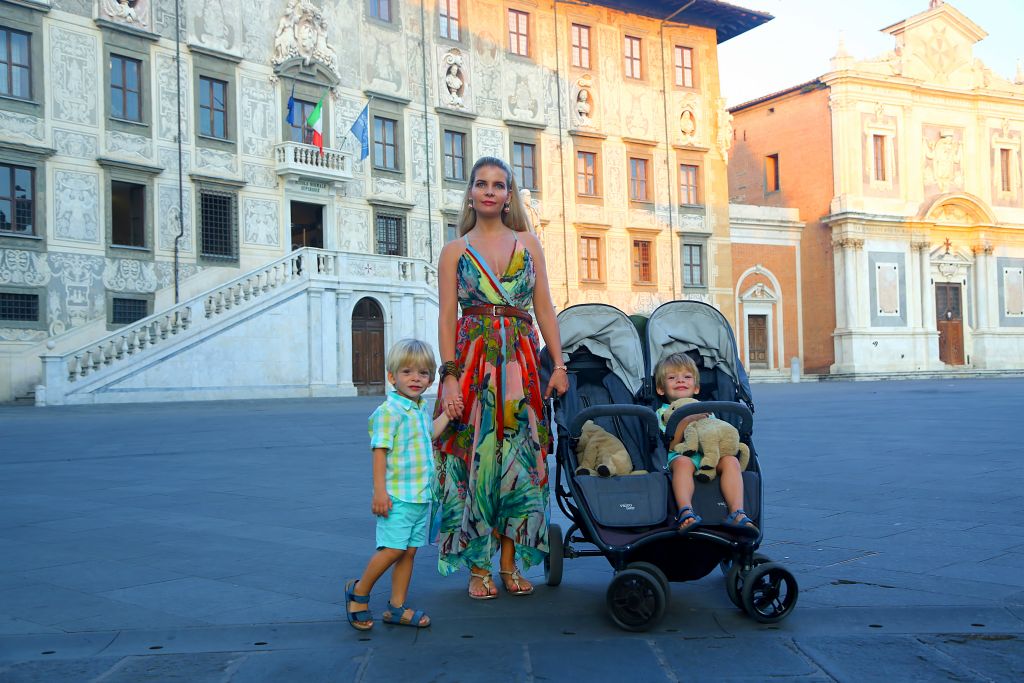
Today, the building houses the Scuola Normale Superiore, a prestigious educational institution. Its alumni include many renowned individuals who have made significant contributions to the humanities and sciences, such as history, philology, and mathematics.
Pisa is a city with a rich history, architecture, and an unparalleled ambiance. While the Leaning Tower is popular around the world, it was the Pisa Cathedral that left us even more amazed and impressed. And, of course, the city hides numerous other remarkable attractions that are equally worth attention.
Beaches of Italy
Italy’s expansive coastline is divided into individual beaches like a mosaic. Every city we visited boasts one or several of them.
The majority of the beaches are privately owned, well-appointed and well-maintained. Various entrepreneurs transform these coastal stretches into recreational hubs, complete them with restaurants, bars, offer deck chairs and sunbeds for rent.
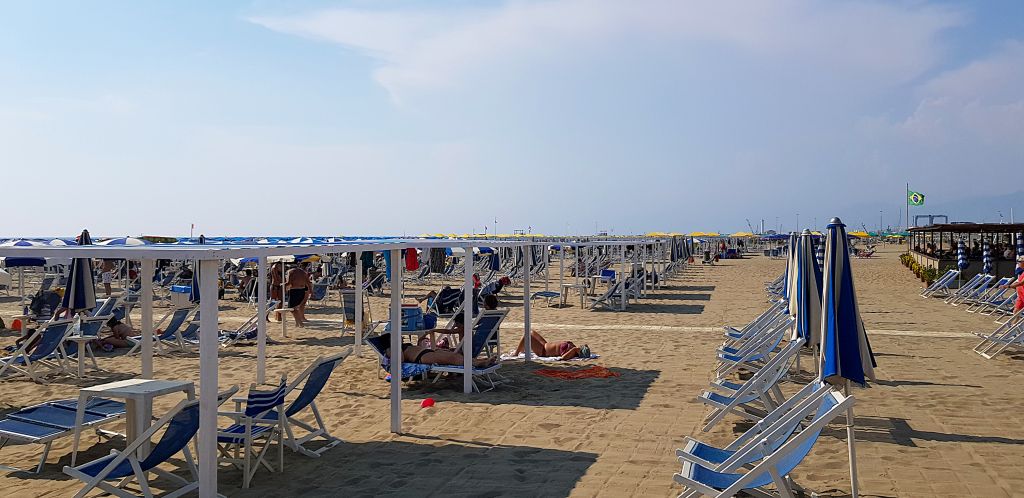
The choice of relaxation options is highly diverse. For those seeking a more expensive experience, there are luxurious sunbeds with cushions, designed for several persons and located in shady areas. Simpler options include single-seater sunbeds paired with umbrellas right under the scorching sun.
Italy also offers free beaches, albeit in smaller numbers. However, their notable drawback is less maintenance. While paid beaches are cleaned almost every day, free beaches get significantly less attention. This stark contrast between paid and free beaches was quite surprising for us, as we saw cigarette butts and other litter scattered across the sand there.
Roads and Parking Lots
Similarly to beaches, Italian roads also come in two categories: toll roads and toll-free roads. Toll roads offer a faster route to the destination you need. Toll-free roads wind through the countryside, requiring significantly more time to reach the destination.
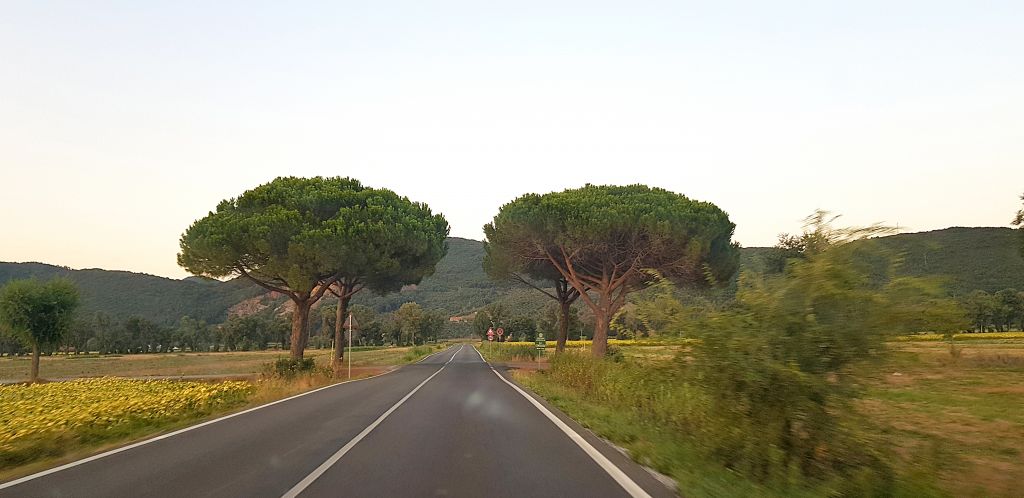
When we first started visiting the beaches, we chose toll roads, paying around 7 euros for a round trip. Of course, as our beach trips became more frequent, we decided to switch to toll-free roads as it was more cost-effective.
The parking situation at the beaches was far from ideal. Upon reaching our destination, we discovered that there were no usual parking lots. Instead of well-equipped asphalt surfaces, we saw an enclosed area occupied by compacted sandy beaches with parking meters. That was where we were supposed to park our car. Moreover, the daily parking fee was 7 euros.
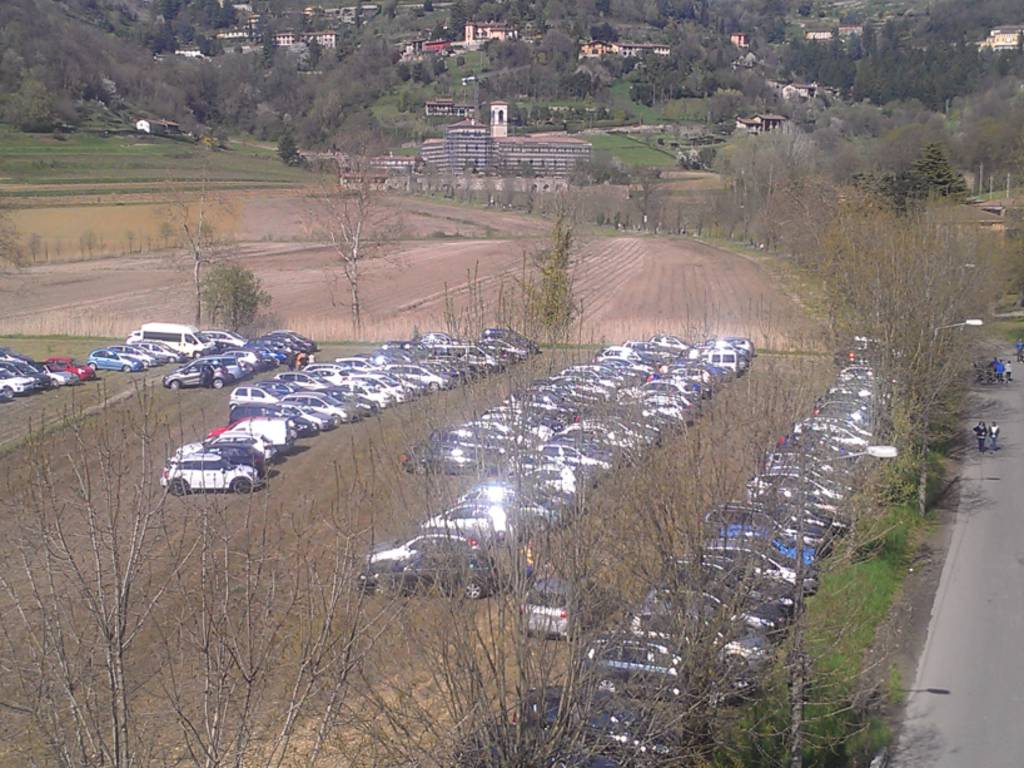
Conclusion
Italy presents certain service peculiarities that may differ from our accustomed norms. Undoubtedly, Italians cherish their country’s beauty and are eager to share it with visitors. However, their approach is unique: they pay very little attention to expanding tourist infrastructure and developing new services that attract tourists. Italians know that millions of tourists will come to their country annually anyway. So they strive to focus on maximizing the profitability of existing resources.
Our life in Italy proved to be unforgettable in general. From the charming villages of Cinque Terre to the bustling La Spezia and the magnificent Pisa, each corner of Italy captivated us in its own way. The leisurely pace of life, tasty cuisine, azure beaches, and rich history left an indelible mark on our hearts. We will always remember Italy as a land of dolce far niente, where the beauty of nature intertwines with architectural masterpieces.


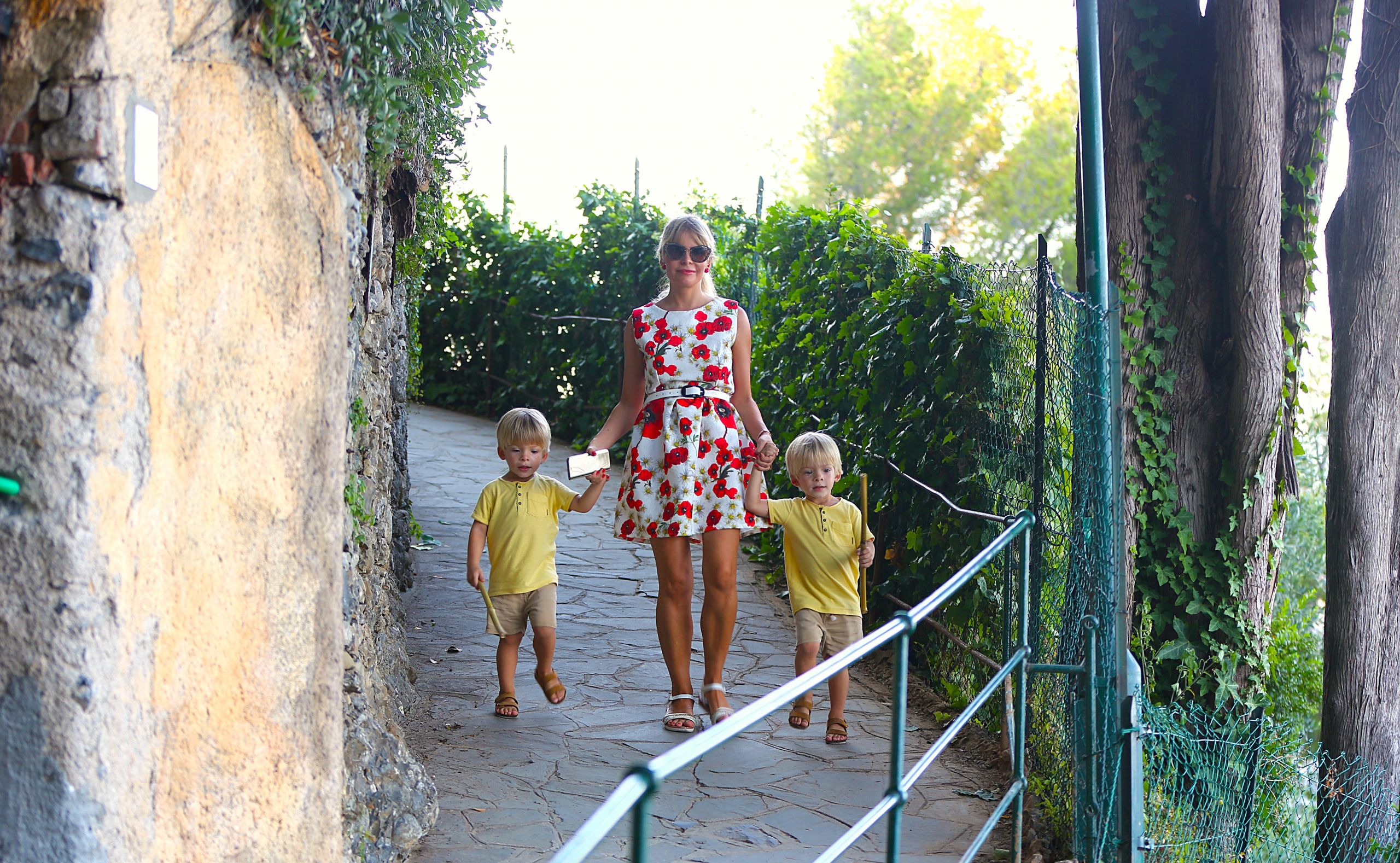
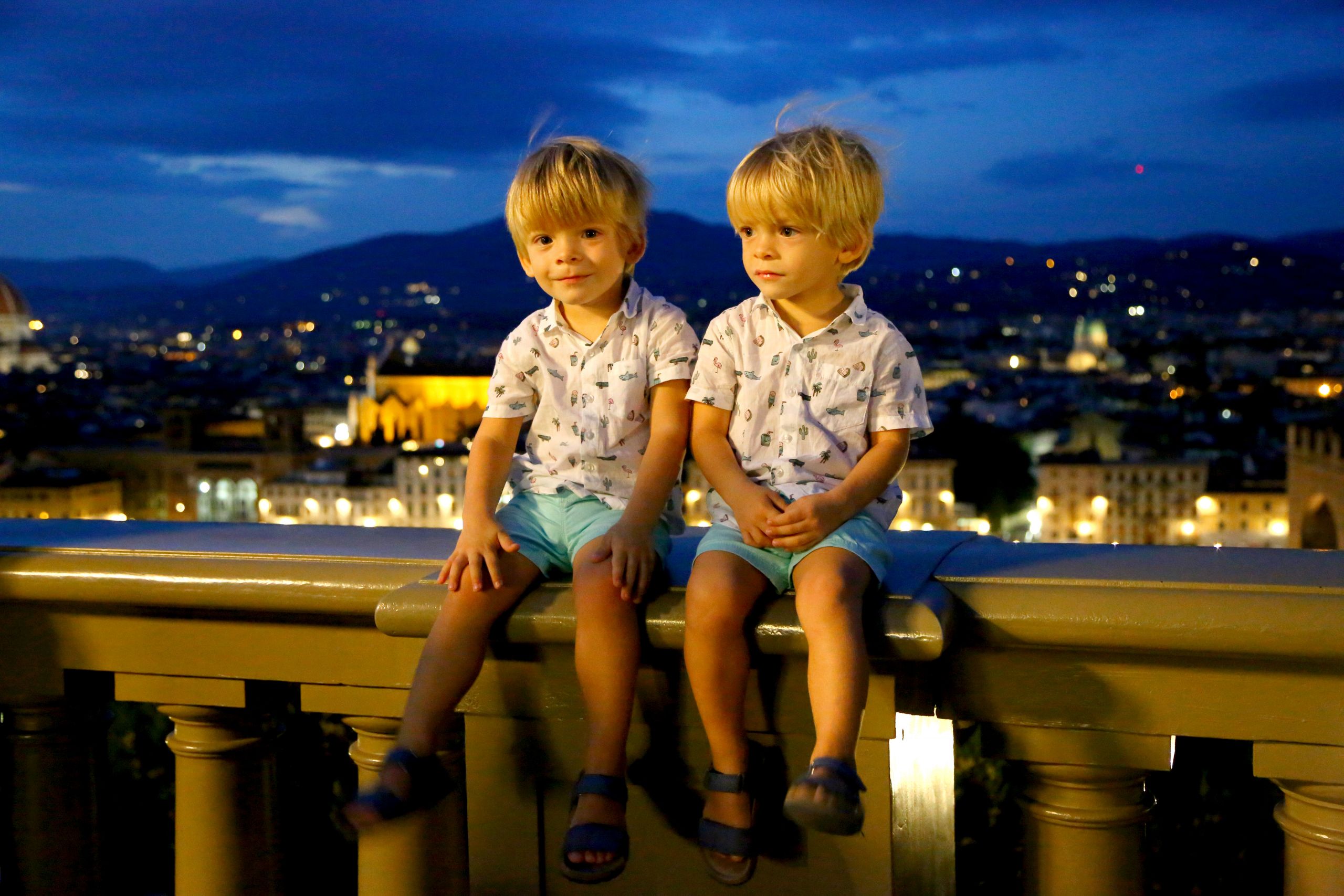
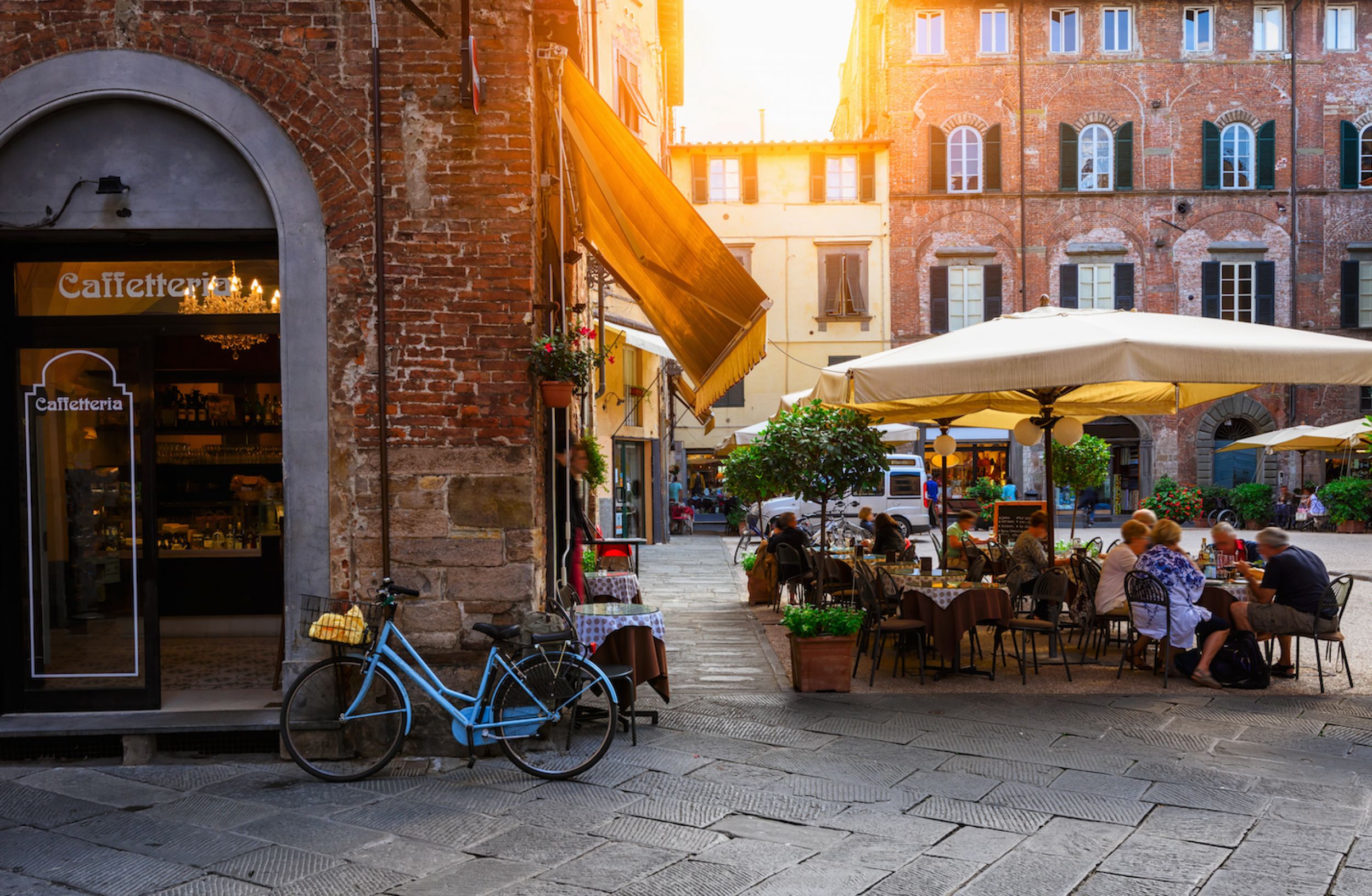
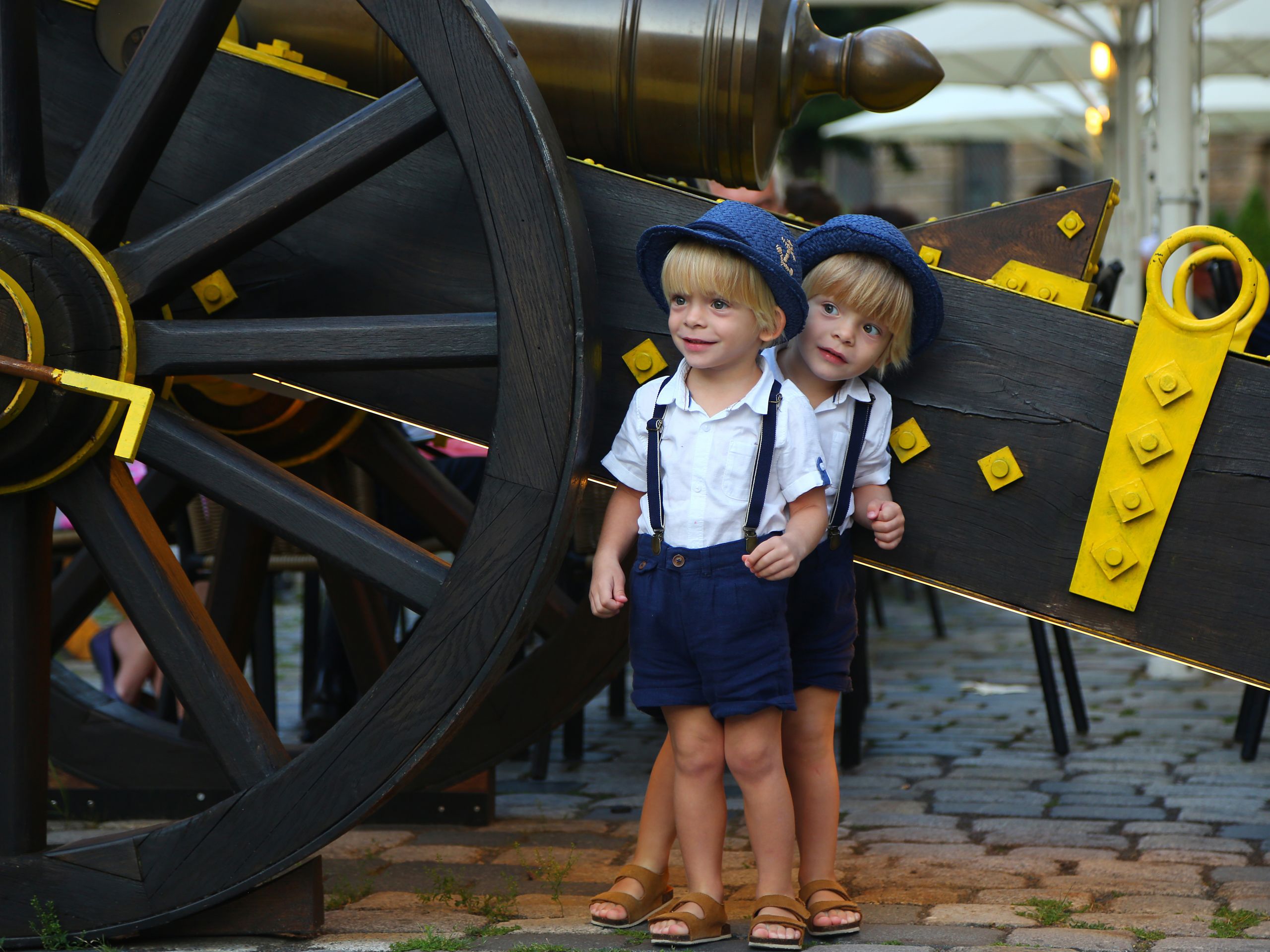

Leave A Comment